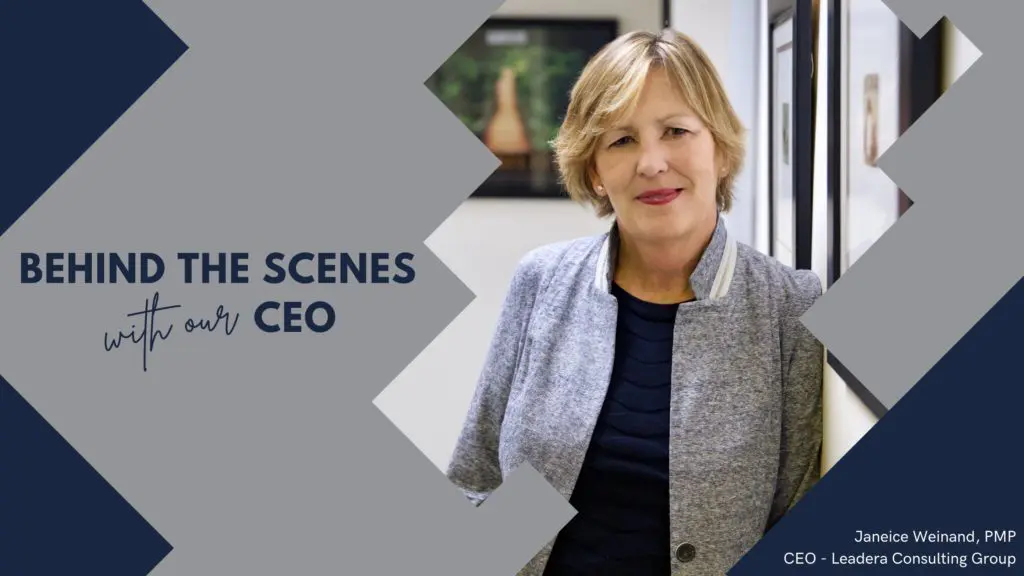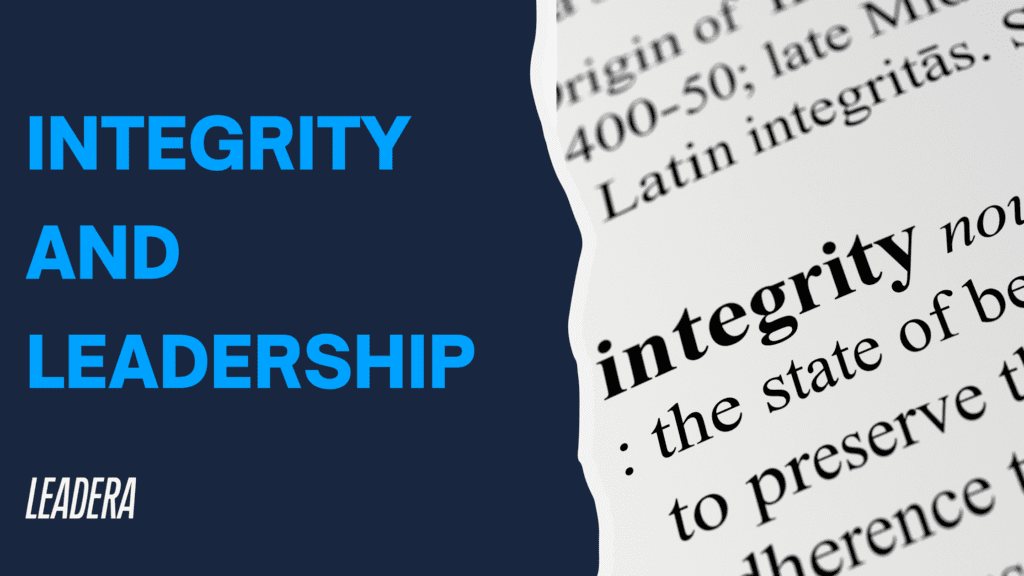
People have “too much to do.” Ask anybody, they will tell you. It can easily seem as if there is more to do than you could possibly ever get done.
However, consider this ~ you’re only going to do what you’re going to do today. That sounds obvious, right? But in reality, most people don’t relate to what they have to do as if that’s the case. For many, to-do lists have become lists of unrealistic expectations to accomplish in one day; they are full of things we feel we should do or have to do, which sets us up for failure by thinking that if it’s on the “list,” we’ll get to it.
The truth is, you’re not going to do all the things you have to do just because it’s on a list. You’re really only going to do what you actually do. Clear as mud? The key to what you’re going to do is knowing that actions take place in time. Anything you’re going to do takes a certain amount of time, therefore if it’s not on your calendar, it’s not going to get done and it won’t happen.
Spoiler alert – here is the one simple trick to successfully tackling your to-do list:
Schedule real time on your calendar to do the task, including scheduling an appropriate amount of time to do it in. Make a habit out of doing this one simple trick and you get ahead of the game in actually crossing that item off your to-do list.
Everyone has a long list of things they want to do, should do, and ‘have’ to do. But when you get into that list, most of the items on it never get done, which causes many of us a lot of stress. Giving up the myth of the unending list of things to do, which occurs as a burden, is a powerful step forward in productivity.
Being selective and rigorous about what goes into our calendars is the key. Plan and schedule the things you’re committed to doing ~ distinct from the things you want to do, should do, or ‘have’ to do. When you schedule items, be honest with yourself by allocating the proper amount of time for every aspect of the task. Otherwise it won’t get done. And while adding it to your calendar doesn’t guarantee the item will get done, it will significantly raise the likelihood if it’s “in existence.” Simply put – what is on the calendar has the highest likelihood of getting done.
I am impeccable about my calendar. Given what’s on my plate, I have to be. Here is an example on my calendar of this practice I’ve put in place where I schedule what I’m going to do and give myself enough time to get it done; say I have a meeting at 10:00 am downtown. On my calendar is:
- “9:15 – 9:30 pre-meeting briefing”
- “9:30 – 10:00 drive time to meeting” (it only takes 15 minutes to get there)
- “10:00 -11:00 attend and participate in meeting”
- “11:00 – 11:30 drive back to office”
- “11:30 – 11:45 debrief meeting”
That gives me the time to 1) brief, 2) travel, 3) sit down (as opposed to rushing in at the last moment), 4) participate fully in the meeting, 5) return to the office and debrief my notes from the meeting, and 6) send a follow-up to the client. So, while I am only going to a one-hour meeting, in reality ~ in real time ~ it takes two and a half hours to complete everything about that meeting.
We are paid to produce results with our time. Therefore, relating to and managing our time is a valuable asset that will make us more effective and more productive. Use your calendar as your best tool for effectiveness and productivity. I believe it is an essential skill for anyone in today’s workforce or otherwise, and a strong habit of successful leadership.
The bottom line is, you’re only going to do what you do. And if it’s on your calendar, there’s a much higher likelihood you’ll get it done.
——————————————
Kevin Cullen is President of Leadera Consulting Group, specializing in producing breakthrough business results. For more information on this topic or other business challenges we can help you solve, contact us at Leadera Consulting Group.
Kevin Cullen: kcullen@leaderacg.com
Read More
Did you know that seventy percent of all strategic program initiatives fail? While there is nothing like watching a team that is operating at full capacity and succeeding despite the high odds against them, a high-performance team doesn’t occur by accident. To prepare for future success, organizations must build their teams intentionally.
Having worked with hundreds of organizations, Leadera has discovered that much of the breakdown in teams and initiatives occurs in the way people work together ~ the way they communicate to and from each other; the way they support one another. The level of integrity that’s present amongst the team and in the project, as well as the way in which they each regard one another, are all elements on which the success of an initiative depends.
Leadera has identified and built its 2-day course ‘Building A High-Performance Team’ specifically to address the five essential practices for building high-performance teams, including:
1. Authentic Listening
This is much easier said than done, as most people think they are good listeners ~ not true. Authentic listening requires the ability to get in another’s world; not just their words, but the place from which they are speaking and understanding what they intend to say. Two good habits to develop this skill are: 1) give the speaker your undivided attention and 2) repeat back to the person what you heard and what you think their intention is in what they said. This gives the speaker an opportunity to confirm or correct your feedback.
2. Talking Straight
This means getting things up on the table that are difficult or uncomfortable to address ~ and to do it in such a way that people are left feeling respected, honored, and empowered. At the same time, it’s essential to get the issue (the “elephant in the room”) dealt with head on. It’s a fine line between confronting something that is difficult to talk about and doing so with the sensitivity it requires. This takes courage and grace at the same time.
3. Working as a Team
Watch any professional sports team that is working successfully and this becomes apparent. It requires a “pit crew” mentality. Each person on the team backs up, supports, and empowers the others. Their win belongs to each of them. “Your win is my win. Your loss is my loss.” They work together in such a way that extraordinary results take place. They back each other up and they support one another in difficult situations and circumstances. No one gets toppled by little things. Nothing gets in the way.
4. Honoring Your Word
If this practice doesn’t happen, you can forget the rest. This is simply working towards doing what you say you will do. It’s doing what you know to do, what’s expected, and what you know is right. Everybody knows how to do this ~ the question is, do they do it? Fundamental to this is cleaning it up when you don’t do what you said you would do. Clean it up immediately and move on.
5. Being Complete
The practice of being complete means that you don’t step over the trash. If something needs to be said, dealt with, or cleared up, it gets dealt with right away. The team understands that when you operate on top of issues, resentments, and things unsaid, everything comes to a grinding halt. This one is about getting things complete so they get clear, and there is a level of appreciation maintained by developing the practices of doing so. In sports, you see the guys in the dugout or on the court “high-fiving” each other with each little win throughout the game. This is no different than the importance of validating success and each win in the office.
Summary
Having these five practices in place provides you with the fundamental skills to build a high-performance team. We’ve seen that when teams have these five components working actively, the likelihood of success turns around dramatically from 70% likely to fail to 85% likely to succeed.
Leadera has a proven track record for successful project implementation when these five principles are utilized and present. We welcome the opportunity to bring the ‘Building a High-Performance Team’ course to your team and align it with the vision and values of your organization. For more information, reach out to us at the emails below.
——————————————
Kevin Cullen is President of Leadera Consulting Group, specializing in producing breakthrough business results. For more information on this course or other business challenges we help you solve, contact us at Leadera Consulting Group.
Kevin Cullen: kcullen@leaderacg.com, cc: acook@leaderacg.com
Read More
Without authenticity you can forget being an effective leader. Sound extreme? Over the last decade authenticity has emerged as one of the most critical aspects of leadership. In an article, Authenticity Paradox by Herminia Ibarra (Jan-Feb 2005 Harvard Business Review), the author says, “Authenticity has become the gold standard for leadership.” However, she adds, “a simplistic understanding of what it means can hinder your growth and limit your impact.”
Why? Because authenticity is not as simple as most people would like to think it is or assume that it is. Many people see authenticity as being “transparent” and therefore one must air ones every emotion and thought publicly. That kind of see-through self is not authenticity at all, in fact if you go about broadcasting your constant internal state it will end up undermining you for a couple of reasons. First, nobody wants to hear all that stuff. For goodness sake they can hardly stand the noise generated by their own internal state. And second, what’s going on with you internally is not who you are; nor is it what you stand for and therefore it is not your authentic self. On one hand authenticity is certainly not broadcasting any and all utterances from one’s internal state on loudspeaker, and on the other hand it is being honest and straight on where you stand in any given matter. Perhaps more importantly, authenticity requires being aware of and owning one’s weaknesses.
Adding more specificity to authentic leadership, Kevin Kruse (Forbes, May 2013) outlines four factors that are necessary for real and authentic leadership.
- Authentic leaders are self-aware and genuine. Authentic leaders are self-actualized individuals who are aware of their strengths, their limitations, and their emotions. They also show their real selves to their followers. They do not act one way in private and another in public; they don’t hide their mistakes or weaknesses out of fear of looking weak. They also realize that being self-actualized is an endless journey, never complete.
- Authentic leaders are mission driven and focused on results. They are able to put the mission and the goals of the organization ahead of their own self-interest. They do the job in pursuit of results, not for their own power, money or ego.
- Authentic leaders lead with their heart, not just their minds. They are not afraid to show their emotions, their vulnerability and to connect with their employees. This does not mean authentic leaders are “soft.” In fact, communicating in a direct manner is critical to successful outcomes, but it’s done with empathy; directness without empathy is cruel.
- Authentic leaders focus on the long-term.A key tenet in Bill George’s model (former CEO of Medtronic) is the company leaders are focused on long-term shareholder value, not in just beating quarterly estimates. Just as George did and as Bezos has done for years at Amazon, leaders realize that to nurture individuals and to nurture a company requires hard work and patience, but the approach pays large dividends over time.
Authenticity requires extraordinary courage ~ what Brené Brown calls ‘standing your sacred ground.’ For most it is not an attractive challenge and seen as something to dodge or avoid. I recently introduced the notion of authenticity to a newly advanced group of high-potential, up and coming managers in a Fortune 100 company. Not only did they not like the whole idea of authenticity, they began making a case for why being inauthentic was a better way to go.
They cited examples of how they couldn’t say certain things to their immediate supervisor and certainly couldn’t ever say ‘no.’ They were sure they had to act as if they were on board for something they clearly were not. They had to say ‘yes’ to things they knew they weren’t going to do. And they justified this by saying ‘everyone else does it, why shouldn’t I?’ That’s all under the guise of ‘you have to play politics in organizations.’
While I could appreciate that they had developed a style for not rocking the boat by acquiescing, I asked them to consider that when they’re doing that it is fairly obvious to the others in the room that that is what’s going on, and that at some level they had entered into a truce to conduct and be part of a charade of looking good as opposed to being authentic. Instead I asked them to consider what it might be like to actually be authentic ~ to deal with the issue at hand, instead of just ‘going along.’ Because there’s a good chance that if something doesn’t land right for them it’s not landing right for someone else as well.
Furthermore, they’re skillful in bringing issues to the forefront which might allow for the real issues to get resolved, as opposed to what usually happens which is everyone walks out of the meeting having heard what they wanted to hear and at some level knowing that isn’t what’s going to happen ~ destined for failure.
This is what separates authentic leaders ~ authentic leaders stand in the future. They can see the consequences down the road of being inauthentic. And they address anything in the present that is likely to thwart or block the future. If they don’t believe something is possible or doesn’t make sense they are compelled to say so. It does not give them license to be disagreeable, but it does require them to say where they stand in the matter.
Again quoting from Authenticity Paradox, “being authentic doesn’t mean you can be held up to the light and people can see right through you.” It’s a double-edged sword. On one hand you make your true position and feelings in the matter known, and on the other hand you stay above the fray of sharing your every thought, consideration and concern. Another way to think of this is to be able to present a mature and realistic version of your position on something without necessarily having to expose each and every flaw, and at the same time being aware of one’s weaknesses and flaws is critical to being authentic and therefore being an authentic leader.
Read MoreHow to Re-Engage Your Team As We All Begin Coming Back to the Office

Did you know that seventy percent of all strategic program initiatives fail? While there is nothing like watching a team that is operating at full capacity and succeeding despite the high odds against them, a high-performance team doesn’t occur by accident. To prepare for future success, organizations must build their teams intentionally.
Having worked with hundreds of organizations, Leadera has discovered that much of the breakdown in teams and initiatives occurs in the way people work together ~ the way they communicate to and from each other; the way they support one another. The level of integrity that’s present amongst the team and in the project, as well as the way in which they each regard one another, are all elements on which the success of an initiative depends.
Leadera has identified and built its 2-day course ‘Building A High-Performance Team’ specifically to address the five essential practices for building high-performance teams, including:
1. Authentic Listening
This is much easier said than done, as most people think they are good listeners ~ not true. Authentic listening requires the ability to get in another’s world; not just their words, but the place from which they are speaking and understanding what they intend to say. Two good habits to develop this skill are: 1) give the speaker your undivided attention and 2) repeat back to the person what you heard and what you think their intention is in what they said. This gives the speaker an opportunity to confirm or correct your feedback.
2. Talking Straight
This means getting things up on the table that are difficult or uncomfortable to address ~ and to do it in such a way that people are left feeling respected, honored, and empowered. At the same time, it’s essential to get the issue (the “elephant in the room”) dealt with head on. It’s a fine line between confronting something that is difficult to talk about and doing so with the sensitivity it requires. This takes courage and grace at the same time.
3. Working as a Team
Watch any professional sports team that is working successfully and this becomes apparent. It requires a “pit crew” mentality. Each person on the team backs up, supports, and empowers the others. Their win belongs to each of them. “Your win is my win. Your loss is my loss.” They work together in such a way that extraordinary results take place. They back each other up and they support one another in difficult situations and circumstances. No one gets toppled by little things. Nothing gets in the way.
4. Honoring Your Word
If this practice doesn’t happen, you can forget the rest. This is simply working towards doing what you say you will do. It’s doing what you know to do, what’s expected, and what you know is right. Everybody knows how to do this ~ the question is, do they do it? Fundamental to this is cleaning it up when you don’t do what you said you would do. Clean it up immediately and move on.
5. Being Complete
The practice of being complete means that you don’t step over the trash. If something needs to be said, dealt with, or cleared up, it gets dealt with right away. The team understands that when you operate on top of issues, resentments, and things unsaid, everything comes to a grinding halt. This one is about getting things complete so they get clear, and there is a level of appreciation maintained by developing the practices of doing so. In sports, you see the guys in the dugout or on the court “high-fiving” each other with each little win throughout the game. This is no different than the importance of validating success and each win in the office.
Summary
Having these five practices in place provides you with the fundamental skills to build a high-performance team. We’ve seen that when teams have these five components working actively, the likelihood of success turns around dramatically from 70% likely to fail to 85% likely to succeed.
Leadera has a proven track record for successful project implementation when these five principles are utilized and present. We welcome the opportunity to bring the ‘Building a High-Performance Team’ course to your team and align it with the vision and values of your organization. For more information, reach out to us at the emails below.
——————————————
Kevin Cullen is President of Leadera Consulting Group, specializing in producing breakthrough business results. For more information on this course or other business challenges we help you solve, contact us at Leadera Consulting Group.
Kevin Cullen: kcullen@leaderacg.com

In honor of International Women’s Day, we went behind the scenes with Leadera’s CEO and all-around ‘get things done’ leader, Janeice Weinand.
Currently in its 11th year of business, Leadera provides performance-based consulting and leadership development services to businesses and organizations where collaboration and communication are essential to increasing value and gaining a competitive advantage.
As co-owner and CEO, Janeice specializes in performance-based leadership development and change management, coaching both rising and seasoned leaders, as well as entire teams and organizations, to achieve unprecedented business results.
Keep reading below for our Q&A with Janeice on all things leadership and Leadera.
Q: Tell us about your role at Leadera. What does a ‘day-in-the-life’ look like?
A: In our business, every day is different. From day-to-day or even from morning to afternoon, I may be working one-on-one with clients, designing new programs, updating courses, or running the back end of the business.
Q: What is your favorite Leadera course, and why?
A: The ‘Being a Leader’ course. While it may sound “trite,” it is a truly life-altering course – in the best way.
We are currently gearing up for our first-ever virtual ‘Being a Leader’ course. I’m really excited to open registration on this course. We have seen how vital leadership is over the course of events this past year, as companies have had to pivot organizations and teams during unprecedented events.
‘Being a Leader’ builds leaders for these types of pivots on a foundational level, creating a way of being that allows participants to exercise leadership freely and effectively as their natural self-expression, rather than providing a list of tools and rules to follow.
Q: What is a leadership book you would recommend, and why?
A: Our Iceberg is Melting by John Kotter. It is a charming book that illustrates key truths about how to deal with change.
Q: Why is leadership development important for both individuals and companies?
A: There are many studies that show companies who invest in developing current and future leaders are significantly more productive, have higher retention rates, and overall a more satisfied workforce. I believe that leadership begins with leading yourself and that is a powerful place to be.
Q: What sets Leadera apart in its industry?
A: We work hand-in-hand with our clients to customize engagements to fit an organization’s needs. We believe that all individuals, teams, and organizations have the ability to go beyond what’s expected. Our work is truly a comprehensive revolution that inspires people to think differently, problem-solve effectively, and achieve the extraordinary.
Q: What inspires you to do this work each day?
A: I get to make a profound difference in people’s lives. I’ve seen first-hand the extraordinary results of those who have committed to development and gone through our courses. Seeing that motivates me each day to continue this work.
Q: What women leaders inspire you, and why?
A: Wow, there are a lot. If I look locally, Susan Dray, the new 2021 Chair of the Board for the Greater Houston Women’s Chamber of Commerce, is one. She and the Chamber have many initiatives they are taking on this year, including the support of small businesses which can make a profound difference in the community.
Q: What is your favorite way to spend downtime?
With my two Australian Shepherd dogs, who are 2 and 3. They are a handful and a joy to play with!
To reach Janeice, or learn more information about Leadera’s ‘Being a Leader’ course, you may contact Janeice directly at: jweinand@leaderacg.com (cc: acook@leaderacg.com).
Read More
Unconscious bias is a preferential tendency of which we are unaware and that often operates outside of our control. It is an automatic judgment that is triggered in our brains and heavily influenced by our backgrounds, cultural environments, and personal experiences. It causes a filter that shapes the way we look at the world, how we think, how we speak, and ultimately how we act. It operates as a decision-making mechanism without our being aware of it.
Science and numerous studies have shown that ingrained unconscious bias can be rewired. It starts with recognition and awareness. Below are 4 types of unconscious bias that research has found directly impact the workplace. Keep reading to learn what they are and how they may affect your organization.
1. Affinity Bias – The tendency to warm up to people like ourselves.
The benefit of Affinity Bias is that it is comfortable and easy. The real impact on an organization is that it excludes others and results in alienation.
2. Halo Effect – The tendency to think everything about a person is good because you like that person.
With the Halo Effect, we tend to put people on a pedestal. It cases us to make snap judgements. If you likeone aspect of something to do with a person, you’ll have a positive predisposition towards everything else; if you dislike one aspect, you’ll have a negative predisposition.
3. Confirmation Bias – The tendency for people to seek information that confirms pre-existing beliefs or assumptions.
The benefit of Confirmation Bias is that it helps form a resolute opinion and creates agreement to past beliefs without much thought to the matter. The impact on an organization is it all but stagnates innovation and creativity.
4. Group Think – Occurs when people try too hard to fit into a particular group by mimicking others or holding back thoughts and opinions.
Group Think can be comfortable and allows us to ‘fit in’ with whichever team/organization we currently find ourselves in. The impact, however, is a loss of personal identify, creativity and innovation.[1]
We do not have unconscious bias because we are bad or flawed people – we have it because we are human.
Empower your organization by gaining a deeper understanding of unconscious bias and fostering an inclusive and diverse workforce. The Leadera Disrupting Unconscious Bias: Recognition and Awareness course is an engaging 4-hour webinar that explores the depths and impact of unconscious bias in our personal and professional lives.
Through a series of interactive conversations and exercises, participants in this program will discover where these biases come from, their function, and how they can limit or expand our performance and connection with others.
By participating in this course, people gain an awareness and acquire a set of practices that leave them with a powerful choice as to the type of person they want to be and the type of relationships they wish to have.
For more information on this course, or other business challenges we can help you solve, contact us at Leadera Consulting Group. Kevin Cullen: kcullen@leaderacg.com, cc: acook@leaderacg.com
[1] McCormick, H. The Real Effects of Unconscious Bias in the Workplace. 2016. http://execdev.kenan-flagler.unc.edu/hubfs/White%20Papers/Unconscious-Bias-in-the-Workplace.pdf
Read More
People have “too much to do.” Ask anybody, they will tell you. And now with continuous Zoom meetings and home schooling added in, it can easily seem as if there is more to do than you could possibly ever get done.
However, consider this ~ you’re only going to do what you’re going to do today. That sounds obvious, right? But in reality, most people don’t relate to what they have to do as if that’s the case. For many, to-do lists have become lists of unrealistic expectations to accomplish in one day; they are full of things we feel we should do or have to do, which sets us up for failure by thinking that if it’s on the “list,” we’ll get to it.
The truth is, you’re not going to do all the things you have to do just because it’s on a list. You’re really only going to do what you actually do. Clear as mud? The key to what you’re going to do is knowing that actions take place in time. Anything you’re going to do takes a certain amount of time, therefore if it’s not on your calendar, it’s not going to get done and it won’t happen.
Spoiler alert: Here is the one simple trick to successfully tackling your to-do list
Schedule real time on your calendar to do the task, including scheduling an appropriate amount of time to do it in. Make a habit out of doing this one simple trick and you get ahead of the game in actually crossing that item off your to-do list.
Everyone has a long list of things they want to do, should do, and ‘have’ to do. But when you get into that list, most of the items on it never get done, which causes many of us a lot of stress. Giving up the myth of the unending list of things to do, which occurs as a burden, is a powerful step forward in productivity.
Being selective and rigorous about what goes into our calendars is the key. Plan and schedule the things you’re committed to doing ~ distinct from the things you want to do, should do, or ‘have’ to do. When you schedule items, be honest with yourself by allocating the proper amount of time for every aspect of the task. Otherwise it won’t get done. And while adding it to your calendar doesn’t guarantee the item will get done, it will significantly raise the likelihood if it’s “in existence.” Simply put – what is on the calendar has the highest likelihood of getting done.
I am impeccable about my calendar. Given what’s on my plate, I have to be. Here is an example on my calendar of this practice I’ve put in place where I schedule what I’m going to do and give myself enough time to get it done; say I have a meeting at 10:00 am downtown. On my calendar is:
- “9:15 – 9:30 pre-meeting briefing”
- “9:30 – 10:00 drive time to meeting” (it only takes 15 minutes to get there)
- “10:00 -11:00 attend and participate in meeting”
- “11:00 – 11:30 drive back to office”
- “11:30 – 11:45 debrief meeting”
That gives me the time to 1) brief, 2) travel, 3) sit down (as opposed to rushing in at the last moment), 4) participate fully in the meeting, 5) return to the office and debrief my notes from the meeting, and 6) send a follow-up to the client. So, while I am only going to a one-hour meeting, in reality ~ in real time ~ it takes two and a half hours to complete everything about that meeting.
Of course, in COVID-19 times this schedule looks different, but the principles are the same. Instead of drive time, schedule time in to get up from your desk, move, stretch, get some water, and allow for any technical difficulties logging in. For those working from home, putting your to-do list on your calendar may be even more important, as the structure of the office changes as we balance new responsibilities and environments.
We are paid to produce results with our time. Therefore, relating to and managing our time is a valuable asset that will make us more effective and more productive. Use your calendar as your best tool for effectiveness and productivity. I believe it is an essential skill for anyone in today’s workforce or otherwise, and a strong habit of successful leadership.
The bottom line is, you’re only going to do what you do. And if it’s on your calendar, there’s a much higher likelihood you’ll get it done.
——————————————
Kevin Cullen is President of Leadera Consulting Group, specializing in producing breakthrough business results. For more information on this topic or other business challenges we can help you solve, contact us at Leadera Consulting Group.
Kevin Cullen: kcullen@leaderacg.com, cc: acook@leaderacg.com
Read More
We have become very polarized. Our country, as a nation, has become separated through divergent conversations, dialogues, and opinions more so than ever before. It seems to have been heading in that direction for some time, and the emergent participation in social media and less traditional news outlets has raised the volume on and exacerbated our differences. It’s actually gone beyond having different points of view ~ we have begun to dislike and isolate ourselves from those who disagree with us. We’ve become so divided that we’ve lost our ability to discuss, debate, and argue in a dignified way. It seems that we can no longer have differing points of view without it quickly spiraling into personal attacks and becoming offensive toward one another. I call this phenomenon “The Either/Or Syndrome.” How this translates as a practical matter is “it’s either my way (which is right), or it’s your way (which is wrong)” and there’s no room for anything else. We no longer look to find common ground and discover about what the other person’s thinking might be, and whether or not it has value for consideration. It is take it or leave it, and if you leave it, you’re an idiot and I’ll let you know that, too. We have become unsophisticated, awkward, mean, and sometimes vulgar with those whom we disagree.
Disagreement and debate are at the foundation and traditions of our culture. It’s what has allowed this country to grow, thrive, and keep itself in check for centuries. Yet that is very quickly disintegrating right before our eyes. President Bill Clinton shared a snippet from a book he read called The Big Sort, in which he pointed to this dilemma for us as a nation. He says,
“I read a book a couple of years ago that I recommend to people all the time called The Big Sort by Bill Bishop who is a journalist and, as it happens, a pretty progressive Democrat from Austin, TX. And what provoked him to write this book was his neighborhood in Austin lost its only Republican neighbor. And he loved this guy. And he talked about how their kids played together, and they took walks together. And how much he learned from their arguments, because they didn’t see everything the same way and how much it meant to him to know there was somebody he liked and respected and cared for that he could actually have an honest discussion where neither one of them would be completely predictable. But, he said, I was the only one of our neighbors who was nice to him. Now in their neighborhood in the 2004 presidential election Senator Kerry defeated Pres Bush 3–1. So, the republican guy moves out and moves into another neighborhood in Austin, TX where President Bush defeated Senator Kerry 4–1. And Bishop said, you know both of our neighborhoods were poorer for that.
He pointed out that in 1976 when Jimmy Carter and Gerald Ford had a razor thin election, which by the way ultimately culminated in a lifetime friendship between the two of them and lasted until President Ford passed away. But anyway, in that election ~ a 1% election ~ only 20% of America’s counties voted for one or the other of them by 20% or more. Which meant that in 1976, you could go into any coffee shop or hair salon or barber shop or bowling alley and have a conversation with people who didn’t necessarily disagree with you about what was going on in America.
By 2004, when President Bush won the closest re-election margin of any President since Woodrow Wilson in 1916, 48% of our counties voted for one or the other of them by more than 20%. That much movement. So, he said you know America’s making real progress, this Bishop guy said, we’re not as racist as we used to be, we’re not as sexist as we used to be, we’re not as homophobic as we used to be. The only bigotry we have left is that we just don’t want to be around anyone who disagrees with us.”
The link https://youtu.be/5rjOSfYc5yA
My guess is that you have experienced what Clinton is referring to. We don’t talk and discuss anymore. We speak and don’t listen. And somewhere in all that we miss the opportunity to discover our amazing ability to come to an agreement that’s workable for everyone. It’s as though we’ve taken on a childish style, “If I don’t get my way then I gotta make sure you don’t get yours.”
Everyone is familiar with the biblical story of King Solomon and the two women who had a baby and couldn’t decide to whom the baby belonged. The King, in frustration, offered his solution and told them they would just split the baby in half and share it. It was his way of showing them the absurdity of not being able to work it out or come to some acceptable solution. It seems that we are unwilling to consider any alternative other than “I’m right.”
For us, the solution to this lives in our ability to have a conversation in which we consider the other’s point of view as valid. Not right or wrong, just valid. In fact, just as valid as our point of view. And from there to begin to see what’s possible in a dialogue focused on what’s possible as the end result. Right now, our elected officials sit at a cool 15% approval rating, mostly because they don’t seem to get anything done, and this is because they disagree and won’t have the tough discussions that need to be had to get to a place where they can agree. So, the conversation shuts down and, just like children, they take their marbles and go home. We can’t let it be resolved as Bill Bishop, author of The Big Sort said, “The only bigotry we have left is that we just don’t want to be around anyone who disagrees with us.” It must start with each of us taking a stand to transform the conversation and return to civility.
Kevin Cullen is President of Leadera Consulting Group, specializing in producing breakthrough business results. If you want more on this conversation or the firm, contact us at Leadera Consulting Group.
Kevin Cullen: kcullen@leaderacg.com, cc: acook@leaderacg.com
Read More
As leaders it is our job to deliver value and make a difference in those things that matter. This requires focusing our time and energy on the things that will really move the dial forward. Equally important is that we don’t spend time on things that don’t make a difference and don’t really matter. This can be a challenge because most of the things that come at us in a day come with an apparent level of importance, indicating that they get dealt with immediately. However, my experience is that not all things that come to our attention deserve our time because working on them to resolve them will not make any real difference. Successful leaders have honed the ability to discern which things are going to make an impact and which things are comparatively trivial and, in some cases, irrelevant.
A few years back, I was in a meeting with the president of a company and her leadership team; we were working on designing a program to provide leadership development training for several levels of people just below the leadership team ~ their directors and managers. The team needed to make a decision, in which we could go one of two ways. They could have our firm provide the training as a combination of managers and directors in a group, or we could separate the directors from the managers so that the directors received one level of training (slightly more advanced), and managers would participate in a more basic program. Virtually all of the people in the room except for the president thought the two groups should be isolated and trained separately while keeping their titles distinct. The president disagreed saying, “Separating them will make no difference. They should all receive the same training and it will work just fine.” She viewed it as an opportunity for them to interact and relate, which she considered a positive. However, they didn’t come to a decision at that meeting as they were at a bit of a stalemate. I agreed to see if I could get it resolved offline within the week by having conversations with the individual stakeholders.
I spoke with almost all of the key leaders who were in the room and they all held to the position that the two trainings should be separate. When I went back to the president and told her that they felt pretty strongly about it, she smiled and said, “Then let them have it; they get to win this one. They’re wrong, but I’m not taking that one on.” I was surprised by her response because I knew she felt pretty strongly about her view. I asked, “Just like that, huh?” She responded, “Look, we get into these ‘little battles’ pretty regularly. This one isn’t worth fighting. Sometimes it’s best to let them win in a scuffle like this because it ultimately makes no difference. I choose my battles wisely and when I need to win the battle, I want to make sure it’s one worth fighting for. This one is not worth it, so this one is a free fish.* And it costs me nothing. Because, ultimately, the point is to get everyone trained, which as leaders will happen either way.”
In this situation, the president of the company gave her team a “free fish.” They wanted to win the debate and she let them. This demonstrated to me that she was using her wisdom to determine where she was going to invest her time and energy. As leaders we are required to invest our time in a great many things and most of it isn’t leading, per se. I have seen the “free fish” technique work brilliantly with teams in negotiations and even at home. Try it out and see how it works.
*The reference about a free fish comes from the training of dolphins. They are very smart mammals, probably the most intelligent next to humans. They learn very quickly because they are rewarded with a fish when they do tricks. But dolphin trainers have an additional technique they call a “free fish.” Every so often, for no reason at all, they throw the dolphin a fish. The dolphins know that and pay close attention to the trainer at all times in the hopes they might get a spontaneous “free fish.”
Kevin Cullen is President of Leadera Consulting Group, specializing in producing breakthrough business results. If you want more on this conversation or the firm, contact us at Leadera Consulting Group.
Kevin Cullen: kcullen@leaderacg.com, cc: acook@leaderacg.com
Read More
Everybody’s heard the adage “Physician Heal Thyself.” It refers to the notion that when giving advice one must first have their actions match their speaking. Said another way, if you are going to dispense words of wisdom, then it is incumbent on you that you operate consistent with your counsel. When the speaking and behavior don’t match up, it’s called hypocrisy. It would be like an overweight doctor telling the patient to lose weight for their health, and then later that day seeing that same doctor driving through a fast food chain restaurant getting “super-sized.”
Part of our work involves educating and developing competent managers to become leaders. We do so by distinguishing what leadership really is. Leadership is all about character and modeling that character in your actions. Leadership stands on four foundational factors. They are: integrity, authenticity, being committed to something bigger than oneself, and being “cause” in the matter.*
If you think about these four factors, you can easily see how each of these become pillars for being a leader. The first factor, integrity, is pretty obvious. Without it, nothing works. Integrity creates a foundation of reliability and trust. Second, authenticity has everything to do with being aware of who you hold yourself to be, i.e. walking the talk. To do that, you have to know your blind spots. Third, being committed to something bigger than yourself is fundamental to leadership because if you’re all about you, you’re not believing in and demonstrating anything that people will find themselves identifying with, and therefore will not follow. To be a leader requires followers. Last, and most challenging, is being “cause” in matter. This requires an existential leap of being the owner of, and taking responsibility for, things you probably did not do. Yet if you are “cause” in the matter, then you are willing to deal with it as though whatever happens is your personal responsibility. Each of these are key components; leadership will not happen if any of those four is missing. Leadership depends on all four of those legs of character being solid and intact.
I often see things that are inconsistent with the character of leadership. Here’s a recent example: The other night before the State of the Union Address I was scrolling Facebook, which I use for both entertainment and to stay connected with family and friends. As I was scrolling I saw the following post:
“State of the Union: INAUTHENTICITY & NO INTEGRITY.
Be prepared to be bamboozled newly, America.”
At first I was amused that someone took the time to warn us all. Thank you, Chicken Little. But when I saw who posted it, I was somewhat taken aback because I know this person and know that this person teaches people about communication. They make their living teaching some of the same character values discussed above, and effective communication requires openness. This post did not reflect openness. In fact, it reflected a very narrow point of view that had been concluded before they heard a word of the State of the Union Address. Communication is a key factor in organizational effectiveness. Most people would agree the following things are critical:
- Walk into a situation with an open mind and with no conclusions made
- Fully listen to what the other person has to say
- Try not to prejudge the speaker
If you look at this post, it has none of those things. Yet the person who posted it would claim to be an expert on coaching in the area of communication. What I read was clearly the opposite of that and doesn’t represent what this person espouses. It struck me that if this person could be that blind to how inconsistent what they are posting on social media is with what they teach ~ and I consider this person a fairly aware person ~ the same must be true for others, including myself. Said simply, what this person posted and what they teach suddenly appeared as pure hypocrisy. They spoke their formed opinion and had decided it was the truth. They presented it as if it was the truth. And that is inconsistent with what I know about communication. I suppose we’re all guilty of that at some level. I chose not to add a comment to the Facebook post. I may contact the person directly to share my observation.
Here’s what I discovered for myself over the years in delivering transformational work in organizations: if you do not practice what you preach, if you do not walk the talk, there is no way you will be effective in delivering that character to other people. They will be able to see through the inauthenticity like reading a 10-cent novel and will know that this is only “do as I say, not as I do.” Nobody wants to sign up for getting conned at that level. Bottom line, if you’re going to preach it or teach it, start with what you’re going to do to demonstrate that for yourself and model it to others. Walk the Talk.
*Taken from Being a Leader and the Effective Exercise of Leadership – W. Erhard, M. Jensen
Kevin Cullen is President of Leadera Consulting Group, specializing in producing breakthrough business results. If you want more on this conversation or the firm, contact us at Leadera Consulting Group.
Kevin Cullen: kcullen@leaderacg.com, cc: acook@leaderacg.com
Read More
Step back and look at any organization – what you will see is the manifestation of its culture. By culture we mean values, themes, behaviors, passions, expressions, and actions that take place inside a group ~ in this case, a company. Culture gets established by a combination of 1) how the company was built, 2) its history and evolution, and 3) the leadership being provided inside that company. People inside the company operate consistent with whatever culture has been established or set.
The leader’s job is to create a culture that serves the needs of the stakeholders ~ its people inside and outside the company, meaning employees, customers, and suppliers. Whether or not these themes and values are overtly clear to the people in the organization will dictate the extent to which the people themselves operate consistent with the culture. Obviously, it’s most effective when those values and behaviors are made public and clear to the people in the organization. We have found that the best way to do this is to have those values in writing, made public, and talked about regularly. Several of our clients have done a splendid job of doing this and, in one company in particular, it’s pretty hard to walk down a hallway and not see the values of the company posted for all to see. Our experience of companies that do this well is that the employees are keenly aware of these values and are more likely to operate consistent with them when they are vividly displayed. One of our clients has their values up on the walls about every 15 feet.
There are some recent examples of companies who went off course because the values of the company were not patently clear to the management and employees. One such example is Wells Fargo Bank, which is an institution that built its reputation on integrity, trust, and financial prudence. That translates to “you can trust our company with your money.” However, recently people in the company lost the plot and the company began managing growth and new customer acquisitions “at any cost.” They began to favor and incentivize gaining new customer accounts over being trusted custodians of their customer’s finances. The compensation system began to reward people making the “numbers” vs. people providing excellent service and financial prudence. Consequently, the employees began inventing fraudulent “new accounts” using established customers’ finances without those customers knowing or giving permission to use their information to do so. This unethical behavior was completely inconsistent with what Wells Fargo has stood for over 100 years now.
How could this possibly happen? It happened because integrity got replaced inside the cutlure by greed. The culture had become corrupted. The leadership began leading for near term gains and abandoned the timeless vales that made their company successful for decades. When all of this was discovered and came to the surface, Wells Fargo lost the confidence and trust of the public and they are now hard at work trying to rebuild that trust and reformulate a culture that seemingly got destroyed in a relatively short period of time. Now they’re investing millions of dollars to market contrite apologies and begging for another chance to prove themselves.
Another example of a culture going off course is Facebook. Facebook made its mark as it was originally designed to serve people by connecting them and providing a platform where people could share their most personal details, family events, special occasions, and connect with old friends and lost relatives. It fulfilled that purpose for many years, delivering unimaginable growth for well over a decade. However, the people at Facebook saw opportunity to take this information – people’s personal information, details, behaviors, and habits – and use that information to exploit those who trusted Facebook to deal with that information ethically. It began to package and sell this data so that companies could target markets and, as we now know, even influence peoples’ thinking about social and political issues. People literally began being co-opted (brainwashed) by sinister campaigns that would post fabricated stories and information to sway peoples’ thinking or to incite consternation.
Again, how could this happen? Sadly, the answer is once again greed. The culture became corrupted. Facebook saw the opportunity to exploit its customers and took it. Why? Because the values set at Facebook were focused on growth and expansion, not on being custodians of peoples’ personal information.
In both cases what happened was a failure in managing the culture. I give both companies the benefit of the doubt that they once had noble, admirable, and ethical intentions, but those things were not translated over time into the culture by leadership. The leadership failed to do its job to: 1) set the vision, 2) have a strategic plan, and 3) get people excited about it and get them on board. As we all know, in both cases when it went off the track it did enormous damage to each company. When the values of a company are made clear, public, are talked about and validated, it is our experience that the people in the company line up around those values and behave consistently with them. When they are not clear, people are left to do whatever else they might do because there’s nothing guiding the course and, therefore, behavior. The key is to have the leaderhsip set the values of the company once they really believe it and stand for it. Make those values clear and public (displayed vividly), roll them out to the employees, and keep revisiting and reinforcing them in order to validate them. Our experience is that when this happens, companies stay the course. They live and breathe the values. And when that is not the case, it sticks out like a sore thumb. In short, culture drives behavior.
Kevin Cullen is President of Leadera Consulting Group, specializing in producing breakthrough business results. If you want more on this conversation or the firm, contact us at Leadera Consulting Group.
Kevin Cullen: kcullen@leaderacg.com, cc: acook@leaderacg.com
Read More
Most people don’t think about what it takes to be extraordinary; they consider themselves normal, which translates to “ordinary.” Who doesn’t want to be normal? Interestingly, many people struggle with the notion of living up to their potential. If asked, most would likely say they have not lived up to their potential. It’s what you envision for yourself in the future to accomplish and to be. What if one’s potential is to be “extraordinary,” as in being an extraordinary human being? Can we accomplish that kind of living our lives, or are we so engrained in notions about ourselves and self-imposed restrictions that it gets in our way of success?
Perhaps “extraordinary” is limited by what we see is possible and what we think we’re actually capable of doing. If we can see that something is doable, that it is indeed possible, and that we are capable ~ it’s considered potential for most people. It might also be fair to say we can never achieve our potential, because the moment we do we’d see yet another level to strive for. Like the horse-drawn cart in an old movie with someone holding a carrot dangling out in front of a horse to keep the horse moving towards the carrot ~ there’s more to achieve. Part of what keeps people from aspiring to be extraordinary is that our culture values fitting in and going with the flow. We are drawn to being complacent, stagnant, and risk-adverse. If we see what’s possible as unreachable, then potential could be considered unreachable; it’s just beyond our reach. Most people have limiting, conditioned beliefs that restrict their reach. We’ve listened to and bought into notions and ideas about ourselves that are, in many cases, unexamined.
I know someone working in the fashion industry who I consider to be very bright, talented, and capable. With the amount of talent this person has, there is no apparent reason they shouldn’t do extremely well in their field. Yet they work in a job with a role that is probably a couple levels down from what they are capable of. On several occasions, they’ve requested my coaching and I’ve encouraged this person to break out and create their own clothing line. They are really that talented, but they won’t do that. Their responses are, “I’m simply not ready,” “I don’t want to,” and “I’m not there yet.” At the same time, this person complains about being undervalued, underutilized, underappreciated, and underpaid. They never have enough money. And this has been a long-existing conversation – clearly, they don’t see in themselves what I see in them. For this person to accomplish the extraordinary, they would have to give up their dearly held convictions about their limits and they would have to stop playing small – for most people that’s just too frightening.
Why don’t we reach for what we consider extraordinary? Why don’t we strive for and reach our potential? The simple answer to why we don’t strive for our potential or for extraordinary is because “it’s too dangerous.” It’s dangerous to step all the way up and all the way out there, only to possibly fail. And if we don’t step up, then we’re not responsible on many levels – we stay safe from exposure emotionally, psychologically, and financially. Additionally, we avoid the risk of failing. If you talk to most people, they’ll have a well-constructed illusion that allows them to blame the circumstances for their level of achievement. When we attempt to go outside of our beliefs, our constraints, we enter that dangerous territory. It becomes dangerous when we are exposed, leaving us nowhere to hide and with no one to blame. It becomes very uncomfortable. Life is not designed for our success or for our comfort.
To reach our potential, to be extraordinary, will likely mean being uncomfortable. If we don’t challenge our potential, our own being extraordinary, like Brando’s character Terry Malloy in “On the Waterfront”, we may be left with the illusion that “I coulda been a contenduh.”
Kevin Cullen is President of Leadera Consulting Group, specializing in producing breakthrough business results. If you want more on this conversation or the firm, contact us at Leadera Consulting Group.
Kevin Cullen: kcullen@leaderacg.com, cc: acook@leaderacg.com
Read More
At a very early point in my career as a business consultant it became clear to me that what we really do in organizations is talk, or have conversations. I discovered in practical, everyday situations that what’s really at the heart and soul of an organization is “a set of conversations.” Said another way, what is happening all the time in an organization is that conversations are taking place at every level and with everybody. For example, executives talking to the Board, managers talking to employees, employees talking to customers, suppliers talking to buyers. Both the quality of these conversations and which conversations are taking place largely determines the commitments of an organization, and therefore its results. These conversations are what drives thinking, strategy, and decision-making.
In a very real way one could say that you are paid to have conversations. Since the quality of these conversations is what determines the actions to be taken, it makes sense to conclude that the higher the level of a conversation, the more value will get added to the business. For instance, if we’re “just chatting,” we will not likely be having conversations that make any change or contribution to the organization. If we are having conversations about what our business is up to, we will have an entirely different level of conversation ~ one that potentially adds value. Conversations take place prior to the initiation of action. Whether the company moves forward on a capital investment is a function of the conversation that took place right before that decision was made; whether to staff up or staff down is proceeded by a conversation; whether or not a company competes in certain markets is the result of conversations.
Obviously in any conversation there are two main components ~ a speaker and a listener. There’s what’s being said by one or more people and what’s being heard by one or more people. Typically, most organizational cultures favor avoiding confronting difficult conversations. Consequently, I am a big fan of people speaking up ~ getting things on the table to be addressed and not ignoring the “elephant in the room.” Throughout my career I have encouraged people to do exactly that: speak up, say exactly what’s on your mind, and get those issues addressed. Getting things on the table allows for issues and concerns to be dealt with in an open manner. When people are open and are willing to talk about the issues, including critical or difficult ones, better decisions get made and more effective actions take place. This kind of open communication breeds success in organizations.
However, there are some conversations that are not productive and do not move things forward. Saying what’s on your mind is not always the right thing to do. In fact, in many cases you would be better off not saying what’s on your mind because it is not going to move things forward and serves to do exactly the opposite by shutting down the conversation. I’ve seen this happen over and over again. When this is the case I suggest that we “zip our lips” and instead take a deep breath, let the cosmic energy flow through you, “grasshopper”, because what you’re about to say is only going to cause problems for you and everyone else. Therefore, in those situations the best course of action is to say nothing. The adage holds true, “silence is golden”. For example, let’s say you have a negative attitude from past experiences with the IT department in your company. There’s a discussion in the room about turning something over to IT; here’s your chance to take your well-deserved dig at IT one more time so that you can be right again with “I hope we don’t run into the typical problem we always have with IT.” Nope ~ zip it. The comment will make no difference and it will only do damage in the relationship, which is not what you need right now. Instead of building trust, it will destroy it.
What I’ve observed over the years while working in many organizations is that these conversations – which I’ll call “conversations for no possibility” – are usually had by certain people who I consider the “naysayers.” These are the “glass half empty” folks who look at the situation from what’s wrong with it while focusing on the flaws. Such people and such conversations serve to slow progress down or stop progress altogether. So many times I’ve seen these naysayers raise their hands right when we’re about to make an important decision and lob in a non-sequitur. It’s usually in the form of a question that sounds something like this: “Do we know what business we’re really in?” or “We tried this before unsuccessfully. What makes us think we can do it this time?” Full stop. Once they do this you can watch what happens to the conversation right there in the room. What was just before a focused, positive conversation steadily advancing the ball is now completely thrown off track by this “psychic bong hit” that just got blurted out and throws it into a whole other gear. It creates a kind of dizziness in the room. My assessment is that, though these people consider themselves fundamentally committed to making a difference, instead of their contribution serving to forward the action, it derails it and sends it off in a different direction which is almost always non-productive. The other people in the conversation are left with questions and doubts about what the naysayer is out to produce.
Considering the opportunity to choose the conversations we have, my coaching is that perhaps it would be best to consider what you are about to put into the conversation and ask yourself, “Is this going to forward the conversation or is it going to derail the conversation?” And if it’s the latter maybe it would be best if it didn’t get added. Another way to say that is “zip your lip.”
Kevin Cullen is President of Leadera Consulting Group, specializing in producing breakthrough business results. If you want more on this conversation or the firm, contact us at Leadera Consulting Group.
Kevin Cullen: kcullen@leaderacg.com, cc: acook@leaderacg.com
Read More
The Trim Tab metaphor was used by Buckminster Fuller ~ an American philosopher, systems theorist, architect, and inventor. I met him years ago. He shared something that has impacted me ever since: the Trim Tab Effect. It provides access to the possibility of making something happen more efficiently without exerting more effort. Bucky said:
“Think of the Queen Mary – the whole ship goes by and then comes the rudder. And there’s a tiny thing at the edge of the rudder called a trim tab. It’s a miniature rudder. Just moving the little trim tab builds a low pressure that pulls the rudder around. Takes almost no effort at all. But if you’re doing dynamic things mentally, the fact is that you can just put your foot out like that and the whole big ship of state is going to go. So I said, call me Trim Tab.”
Consider your hiring process. Face it, you’re not going to be happy if you hire the wrong person. Anyone who has done so knows exactly what we’re talking about here. It takes a lot of time to recognize that you’ve hired the wrong person. Then, a lot of time to admit it to yourself, to try to adjust to it, and then to attempt to fix the problem. After all that, it usually takes a lot of time to make the decision to fire that person. And you then have to start the process over again ~ more time, more energy, and more money. Have a process that makes something happen more efficiently without exerting more effort. Trim Tab.
Here’s the process we designed to ensure a good hire:
- Start with good, qualified candidates. We hire a good placement firm.
- The candidates will be pre-screened for skill level. In our firm it is essential that the right hire is competent in all Microsoft processes.
- The placement firm will pre-test and pre-qualify candidates before referring them.
- They will also conduct a thorough background check ~ don’t underestimate the value of this. I have, and it has backfired on us. Trim Tab.
- Conduct a thorough interview process. This means more than one interview with several people interviewing each potential hire. Sometimes there is the right “chemistry” with one person, but another manager may not experience the same. We conduct three interviews:
- The initial interview
- The call back
- A final interview. Simultaneously the firm is interviewing several other candidates in the process, rather than a linear process. This will expedite things significantly. Trim Tab.
- Test their skill. Give the potential candidates a TASK to complete. We do a lot of presentations with our clients, so it is essential that our employees are facile with generating PowerPoint presentations. The assigned task is to provide a 14-page presentation ~ “Tell us why we should hire you.”
- The document should represent who the candidates are and what they are about. The purpose of the PowerPoint is to present themselves in a way that represents them as the best person for the job. This will give the hiring committee a chance to find out more about the candidates; give a sample of the kind of work they do and the quality of the work they do; give a better sense of how they think of themselves, how they think and approach a situation, and how they think they might fit in with the company (we then give examples slide by slide of how the person might complete the task).
- PROVIDE SIMPLE, CLEAR DIRECTIONS: “Complete the following assignment and send it back within 24 hours.” Following directions is a “must.” I’ve learned a lot from this step as well ~ how a person follows directions is essential to the successful fulfillment of workflow in the firm. Trim Tab.
- Trust your instinct. Recognize the difference between what’s “on paper” vs. what your “gut” is telling you. Some candidates have all of the right qualifications, but something about them tells you they are “not quite right.” Determine the difference between their credibility versus how they “show up” for you in person. Trim Tab.
- Bring them into a public setting. We’re looking to discover what it’s going to be like working with this person ~ what they’re like in real life. We take them out for a lunch or dinner meeting. There, we can see how they interact with people ~ it reveals much more than how they behave in an interview. How do they treat the wait staff? How do they place their order ~ are they ordering from the menu or requesting the chef design something specific for them? Are they easy to interact with socially? Where is their attention focused ~ on themselves or on others? Trim Tab.
Kevin Cullen is President of Leadera Consulting Group, specializing in producing breakthrough business results. If you want more on this conversation or the firm, contact us at Leadera Consulting Group.
Kevin Cullen: kcullen@leaderacg.com, cc: acook@leaderacg.com
Read More
I’m sharing this blog article written by Ryan Holiday with you today because of its value and good advice for those just starting in their careers. Thanks to Regina Mellinger from Primary Services for bringing this great article to my attention. Please see the end of the article for the link to Ryan Holiday’s original blog post.
At the height of the financial crisis in 1975, Bill Belichick—the now six-time Super Bowl-winning head coach of the New England Patriots—was 23 years old and unemployed. Desperate for a job in football after an assistant position fell through, according to his biographer David Halberstam, he wrote some 250 letters to college and professional football coaches. Nothing came of it except a unpaid job for the Baltimore Colts.
The Colts’ head coach desperately needed someone for the one part of the job everyone else disliked: analyzing film.
Most people would have hated this job, especially back then, but it turned out to be the springboard through which the greatest coach in football was launched into his legendary career.
In this lowly position, Belichick thrived on what was considered grunt work, asked for it, and strove to become the best at precisely what others thought they were too good for. “He was like a sponge, taking it all in, listening to everything,” one coach said. “You gave him an assignment and he disappeared into a room and you didn’t see him again until it was done, and then he wanted to do more,” said another.
Most importantly, he made the other coaches look good. His insights gave them things they could give their players. It gave them an edge they would take credit for exploiting in the game.
It’s a strategy that all of us ought to follow, whatever stage of our careers we happen to be in. Forget credit. Do the work.
I’m lucky enough someone told me that early on, and I still try to follow it today. Don’t worry about credit, they said. Starting as an assistant in Hollywood, the best thing I could do was make my boss look good.
Forget credit so hard, they said, that you’re glad when other people get it instead of you.
It ended up being pretty decent advice, but it was nowhere near the right wording. I certainly wouldn’t have moved upwards as quickly as I have if I’d just sat there and worked on the way people thought about my boss.
Now that I’ve been around a bit, I think a better way to express it would be:
Find canvases for other people to paint on.
It’s what I now call the canvas strategy.
I used it as a research assistant for bestselling authors. I used it as Head of Marketing for American Apparel. And I continue to use it with my company Brass Check, advising companies like Google and Complex, as well as multi-platinum musicians and some of the biggest authors in the world.
I even wrote a chapter about it in Ego Is the Enemy.
One of the things I kept coming across in my research was that Belichick wasn’t unique. So many of the greats—everyone from Michelangelo to Leonardo da Vinci to Benjamin Franklin—used the same strategy to become great. The strategy? The canvas strategy.
In the Roman system of art and science, there existed a concept for which we have only a partial analog. Successful businessmen, politicians and rich playboys would subsidize certain favored writers, artists, and performers.
More than just being paid to produce works of art, these artists performed a number of tasks in exchange for protection, food and gifts. One of the roles was that of an anteambulo, literally meaning one who clears the path.
An anteambulo proceeded in front of his patron anywhere they traveled in Rome, making way, communicating messages, and generally making the patron’s life easier. The artists who did this were rewarded with stipends and commissions that allowed them to pursue their art.
That takes humility. The canvas strategy takes humility.
It’s a common attitude that transcends generations and societies—the angry, underappreciated geniuses forced to do stuff she doesn’t like for people she doesn’t respect as she makes her way in the world. How dare they force me to grovel like this. The injustice, the waste.
But when you enter a new field, we can usually be sure of a few things:
- You’re not nearly as good or as important as you think you are.
- You have an attitude that needs to be readjusted.
- Most of what you think you know, or most of what you learned in books or in school, is out of date or wrong.
There’s one fabulous way to work all of that out of your system:
Attach yourself to people in organizations who are already successful and subsume your identity into theirs and move both forward simultaneously.
It’s certainly more glamorous to pursue your own glory, though hardly as effective. Obeisance is the way forward. That’s the other side of this attitude. It reduces your ego at a critical time in your career, letting you absorb everything you can without the obstructions that block other’s vision and progress.
Imagine if for every person you met you thought of some way to help them, something you could do for them, and you looked at it in a way that entirely benefitted them and not you. The cumulative effect this would have overtime would be profound.
You would learn a great deal by solving diverse problems.
You’d develop a reputation for being indispensable.
You’d have countless new relationships.
You’d have an enormous bank of favors to call upon down the road.
That’s what the canvas strategy is about—helping yourself by helping others, making a concerted effort to trade your short term gratification for a longer term payoff.
Whereas everyone else wants to get credit and be respected, you could forget credit. Let others take their credit on credit while you defer and earn interest on the principle.
The strategy part of it is the hardest. It’s easy to be bitter, to hate even the thought of subservience, to despise those who have more means, more experience, more status than you, to tell yourself that every second not spent doing your work or working on yourself is a waste of your gift to insist, I will not be demeaned like this.
Once we fight this emotional and egotistical impulse, the canvas strategy is easy. The iterations are endless.
- Maybe it’s coming up with ideas to hand over to your boss.
- Find people, thinkers, up and comers to introduce them to. Cross wires to create new sparks.
- Find what nobody else wants to do and do it.
- Find inefficiency and waste and redundancies. Identify leaks and patches to free up resources for new areas.
- Produce more than everyone else and give your ideas away.
In other words, discover opportunities to promote their creativity, find outlets and people for collaboration, and eliminate distractions that hinder their progress and focus. It’s a rewarding and infinitely scalable power strategy. Consider each one an investment in relationships and in your own development.
If you pick up this mantle once, you’ll see what most people’s egos prevent them from appreciating. The person who clears the path ultimately controls its direction, just as the canvas shapes the painting.
*Written by Ryan Holiday. For original post on his blog, please go to https://ryanholiday.net/career-advice/
Read More
So often in life we get caught up in insignificant matters that really don’t make any difference. Getting caught up in those things takes us off our game; it can be very distracting and unproductive. There’s an art to living life in such a way that you consistently score 3-pointers because you’ve got your game organized to produce high scores. It takes being a bigger person ~ not only in the significant matters, but in the smaller matters as well. Being big about something is an art, it requires skill and thoughtfulness.
Here’s an example ~ the other day I was having lunch with a client at a restaurant near his place of business. After we took a quick look at the menu, the waitress came. I ordered Chicken Romano Salad, which I almost always order at this restaurant, and my client ordered Salmon with Rigatoni. While we were engaged in a great conversation, the waitress came with our meals and placed the Chicken Romano Salad in front of me and a Chicken Romano Salad in front of my client. There was an awkward moment while we looked down and, seeing what had happened, I said, “That doesn’t look like Salmon with Rigatoni to me.” At which point the waitress reached for his plate to make the correction. My client simply said, “No, this will be fine. It’s something new and I’d like to try it.” She made another attempt and he assured her he was satisfied with the plate in front of him.
When she walked away, I looked at him and commented, “My god, that was amazing.” He really didn’t know why I thought so. I told him that “error” would have become a major issue for them making a big scene over it. I have witnessed a meltdown over much less. He said that after I had ordered the Chicken Romano Salad, he wondered if maybe he should try it, too. We both got a laugh and I said, “You willed it here.” Given what had just happened, I told him, “I want to appreciate something about you, Ken, and that is your ability to be a big person and not get hooked by inconsequential things. You focus on what matters. And that’s a great attribute of yours.” I have known Ken for 15 years and have never seen him be anything but dignified and gracious ~ probably why he is so good at his job and such a strong leader. It was a perfect example of someone being bigger than the situation and being a bigger person. It’s easy for any of us to be small. And at the same time, it takes something on our part to be big about anything.
Conversely, I was having dinner with a client recently (who happened to be a woman) and, unbeknownst to me, she had experience in the restaurant business. Consequently, she had pretty high standards and since this was a nice restaurant she felt entitled to expect the highest level of service. But what I noticed and what ensued was a series of tirades correcting the waiter ~ everything he did was wrong. We had ordered slowly, several times actually because she was sure that the waiter didn’t understand what she was saying. He did. Additionally, she had ordered a “special appetizer” that she said would take a while to prepare. She instructed the waiter to serve her Caesar salad before the appetizer. Of course, the appetizer came first. She “ate” the guy. The guy couldn’t have been genuinely sorrier or more apologetic. The salad was soggy. She had ordered splitting two entrees, which she explained three times and spoke to him like he was an idiot. She just lit into the guy and she wouldn’t back off, she just wouldn’t let it go. It was embarrassing ~ I wanted to crawl under the table.
After her third “attack” of this poor guy, she turned on me and said, “Can you see why I’m single?” She was joking, but there was a lot of truth in it. Even she recognized how awful she was being and she could tell that I was uncomfortable…that prompted my making the request that follows. “I have a request of you ~ be nice to the waiter for the rest of the meal. It’s making me very uncomfortable. Would you just be nice to him?” I explained to her that he was just a great waiter and didn’t sign up for the Michelin test tonight. From that point on she was really great to him. She apologized. It took my request that she back off to get her to be the bigger person.
It can go either way. It’s a choice ~ how we react, how we respond to any given situation, is a choice. It takes practice and discipline to develop the muscle I’ll call “being the bigger person.” Generally, we react in fight or flight mode. It’s an instinctive response to protect ourselves from real or perceived threats. But after a few deep breaths, we usually discover that most of what’s coming at us is not a threat at all, and we have a choice about how we’ll respond.
We have an automatic response to “being right” ~ something that is dear to most people. Being the bigger person sometimes means that we apologize even when we’re sure we’re right. It’s a very generous act. At some point we need to consider what’s really important ~ moving things forward or being right? We always have a choice of striking out with our righteousness or letting it go for the sake of what’s possible. Being the bigger person makes you a bigger person.
Kevin Cullen is President of Leadera Consulting Group, specializing in producing breakthrough business results. If you want more on this conversation or the firm, contact us at Leadera Consulting Group.
Kevin Cullen: kcullen@leaderacg.com, cc: acook@leaderacg.com
Read More
| Insights From Kevin | April 23, 2019 |
Have you ever had the shocking realization that something you believed to be true was completely false? You were absolutely sure that something was one way, then you suddenly discovered it wasn’t that way at all; you just thought it was. This certainly happens in life situations, but it also happens in business situations where an assumption was made, decisions were made based on that assumption, which then turned out to be a bad assumption. It could be an assumption about the market, a trumped-up assumption about a buyer’s interest for a product, underestimating your competition. But nevertheless, you place a bet on how you saw that situation and it turned out you were dead wrong. This can be very costly.
Daniel-san, not everything is as seems.
Mr. Miyagi, Karate Kid
Here’s an example ~ and while it’s not a business example, it highlights what can happen when you don’t see the bigger picture. Way back when I was dating someone and early on in our relationship, we took a vacation trip to Kauai (the Garden Isle in Hawaii). Though a small island, Kauai has many different features, including the wettest spot on earth, the dramatic Napali Coast, and Waimea Canyon, which is a mini-version of the Grand Canyon on this small tropical island. The island is very peaceful, serene, and calm; not much commercialism makes it a perfect place to “chill” with a very relaxing vibe.
One day the two of us went for a drive around the island exploring. As we were traveling up one of the winding roads, we noticed off to our right a young couple was just coming out from a trail on the side of the road with big smiles on their faces. The trail looked interesting, so we pulled over and asked them what was down the trail. They said there was a beautiful waterfall down the trail about a mile hike away along the streambed. If we just walked along the rocky bank of the stream, we would find it. So we took our day packs and headed down the trail in search of the waterfall. Just as they told us, after about a half a mile we could hear the powerful rushing sound of what turned out to be an absolutely picturesque waterfall. As we approached, we saw a deep blue tropical pond beneath the waterfall. For a moment we stood there amazed at its beauty. Since no one was there we had this little moment in paradise all to ourselves. And with nobody around we decided to skinny-dip. My girlfriend fancied herself as a bit of a goddess-type ~ you know, the type that wears flowy garments and floral headbands (retro-hippie genre).
This for her was a very sacred moment. She’d be able to be free in nature and be “one with the universe”. My girlfriend happened to be quite attractive and particularly curvaceous. And as she headed out into the middle of the pond where the mist of the waterfall sprayed in the air, she floated there still in nature fully naked. We spent about an hour there together. After some romantic carrying on we dried off, put our clothes back on and headed back up the trail to our car. She exclaimed that this experience was “one of the most extraordinary moments of my life ~ to be alone in a private paradise and to be ‘at one’ with nature”.
We drove up the road about a mile and as we approached the top of the mountain road, we noticed there was a look-out point where about 5 large tourist buses were parked. We were curious ~ something must be interesting. We got out of the car and joined about 100 Japanese tourists loaded with cameras and video cameras who were taking in and recording the sights below. When we peered over the rail what we saw was the very pond we just left. Unbeknownst to us, during our “private sacred time” it was now clear that 100s of Asian tourists were capturing our sacred moments on camera and video. Yes, they were documenting the goddess in all her glory, naked, floating in this exotic pond. My girlfriend’s face froze. She looked like she’d been hit with a Taser. By this time, I was already laughing hysterically and seeing the humor in this, turned to her and said, “You are now a porn star in Japan.” She did not find it funny. Fortunately, this was before the internet and YouTube had taken off, so I don’t think she ever made it onto the social media scene.
However, beyond the obvious, we both learned an important lesson that day. Sometimes how you think a situation is isn’t how it really is. Making assumptions based on what’s in the foreground and not considering what’s in the background and beyond can lead to very surprising and potentially dangerous consequences. Keep your eye on the focus of your project, but step back and see the larger picture in your industry before committing your resources. Sometimes you think it’s one way, but it’s clearly another.
Kevin Cullen is President of Leadera Consulting Group, specializing in producing breakthrough business results. If you want more on this conversation or the firm, contact us at Leadera Consulting Group.
Kevin Cullen: kcullen@leaderacg.com, cc: acook@leaderacg.com
Read More
| Insights From Kevin | March 13, 2018 |
So often we become aware of a problem, or a business issue, or having hired the wrong employee, or some other business mistake. For some unknown reason, we put off dealing with the issue in the moment that we discover it. In hindsight we can all clearly see that when in previous times we’ve waited to handle these issues, things got worse. We all know this. In each case it seems that the issue got exacerbated. Did we think it would resolve on its own? No, of course not. It never does. Never. So why do we wait? What does it take to deal with something with a sense of urgency?
Everyone knows that when you deal with the issue completely, you’ll feel better. You lighten up ~ freedom of expression returns, integrity is restored, taking actions becomes easier, the alignment of action is restored. Things start working again when the company’s core values are alive and well once more.
Awhile back I made a big mistake in hiring someone ~ I hired the wrong person. The mistake I made was not following the process I have in place for successful hiring. Because I knew the person, I made an exception to what I know works and didn’t follow our process, as we’d been friends for many years. It was a very costly mistake ~ it cost a six-figure dollar amount of salary and well over a year’s worth of productivity in our firm. Worse ~ it cost me and the people in our firm our freedom, our creativity, and our time.
In my weak attempts to deal with the issue by doing anything other than what I knew I had to do, I was literally avoiding dealing with it and not communicating. This is the opposite of the design of our company’s culture. The impact of tolerating this became pervasive. And even though I knew, and the employee knew, I had made a really bad choice, I couldn’t seem to let it go. I kept trying to fix a situation that would never work. At the time I didn’t realize how much I had begun to accommodate the person. After some time, I began to notice that there was a cloudiness (a lack integrity). Having things work began to take an enormous effort.
Jack Welch, who was the CEO of General Electric, ran the most successful company in the world at one time. Welch classified managers in four “types”:
Type I
This person shares our values; makes the numbers—sky’s the limit.
Type II
Type II managers don’t share our values; they don’t make the numbers—gone.
Type III
This person shares the values; misses the numbers—typically, another chance, or two.
Type IV
This is the toughest call of all. Type IV is the manager who doesn’t share the values, but delivers the numbers; the “go-to” manager, the hammer, who delivers the bacon but does it on the backs of other people, often “kissing up and kicking down” during the process.
At some point I became aware that the person I had hired fit Welch’s Type II description of a manager ~ they didn’t share the values and they weren’t producing results. The person seemed to operate with an entitlement mentality ~ “what’s in it for me” or “what’s the minimum I can do” seemed to drive their actions. Once I acknowledged the truth about the situation, my choice was clear. They had to go. But it took me awhile. BIG MISTAKE.
So, what is it that keeps us from acting now and making the tough decisions? Maybe what’s at play here is hope ~ the imaginary lure that something might intervene without our efforts ~ that the problem will solve itself. You and I both know that that’s not going to happen. What is required is powerful and decisive action.
Running a successful business requires making tough decisions. Effective action takes honesty and courage. It’s usually uncomfortable. It’s usually hard to do. But that’s what it takes. I once heard that Colin Powell said:
“Bad news is not like wine ~ it doesn’t get better with age.”
Kevin Cullen is President of Leadera Consulting Group, specializing in producing breakthrough business results. If you want more on this conversation or the firm, contact us at Leadera Consulting Group.
Kevin Cullen: kcullen@leaderacg.com, cc: acook@leaderacg.com
Read More
| Insights From Kevin | March 20, 2020 |
Years ago, my boss at the time was a man named Werner Erhard, whose name many of my friends would recognize. He introduced me to a masterful practitioner of an Eastern style practice called Sugi, which is a form of Acupressure developed in Korea. The man’s name was Dr. Choe, and he is a master of the science and practice of the art of Sugi. Dr. Choe is a world-renowned healer who has treated dignitaries around the world, including Emperors, Popes, and other notable leaders. Over the years, I got to know Dr. Choe and as our relationship developed, he began to visit my home in Denver and stay with us for a week at a time. During these visits, he would treat people in Denver – including many of my friends who I invited for one of Dr. Choe’s extraordinary healing “treatments”. Each session lasted 40 minutes and involved deep tissue manipulation, stretching, and even walking on one’s back (which I always jokingly referred to as “Korean Surfing”).
The people who received the treatments found them remarkable and amazing. I personally witnessed several “laying of the hands” that produced unadulterated miracles in people I knew who had their conditions “disappear”. Though Dr. Choe was an older man, he kept a rigorous schedule for his daily treatments – he would get started at 8am and finish up at 6pm with a few breaks. We would have dinner together in the evening and he would sit in the living room with us just talking about various things. He was a wealth of knowledge and wisdom, and in the course of these evening chats he imparted some interesting and insightful things. I loved these precious conversations because I learned so much from him. Once, we were chatting about health and well-being as I was trying to understand how his work with meridians in the body worked so powerfully to free up energy and disappear blockages.
I asked him one night, “Dr. Choe, why is it that some people eat correctly, exercise regularly, drink lots of water, and in general have a healthy lifestyle, yet they can get very sick and in some cases keel over dead in their 30’s from heart failure, while others can live a life of reckless hedonism, eating bad food, smoking, drinking, and surviving on little sleep and live to be 100 years old?” His answer startled me…..he said, “because of worry.” I asked him to say more. He explained that as a rule of thumb, people of means are often less healthy than people who have less possessions and monetary wealth for the simple reason that poorer people have far less things to manage, think about, and worry about. He made his point personal by pointing out that we had two computers, two cars, two televisions, a larger house than most and all the things that go with that. Each thing we accumulate takes attention and care, upkeep, maintenance, and all of those individual things create a certain level of anxiety for a person; more things to worry about. He contrasted this with someone who has half as many “things” and made the point that they only have to be concerned about half as much. He drove it home by saying, “If I have very little possessions, I go outside, I have the sun, I have the earth – I have everything!” but not the worry of those things; I am free, I am relaxed I am not worried.
Dr. Choe said that the word disease literally means dis – ease (not at ease), which he said translates to worry. People who live a simple life are more at ease, less worried, and therefore experience less dis-ease and as a result less stress. He said that stress is the silent killer and that those who worry are prone to stress and therefore they worry and attract disease. He pointed out the obvious benefits of prayer and meditation to quiet the mind, reduce stress, and act as a catalyst for letting go of worry. He said prayer, meditation, moving the body, being in nature all help people to be less stressed and not worry. He went on to talk about the practice of gratitude – being grateful for what I have, for my health, and for the moment is a key deterrent of a worried existence.
Don’t worry – be happy – be grateful – be free.
Kevin Cullen is President of Leadera Consulting Group, specializing in producing breakthrough business results. If you want more on this conversation or the firm, contact us at Leadera Consulting Group.
Kevin Cullen: kcullen@leaderacg.com, cc: acook@leaderacg.com
Read More
| Insights From Kevin | November 2, 2017 |
People have “too much to do”. Ask anybody, they will tell you. There’s more to do than you could possibly ever get done. However, consider this ~ you’re only going to do what you’re going to do today. That sounds like it’s obvious, but most people don’t relate to what they have to do as if that’s the case. Their to do lists are full of things they think they should do or that they “haff” to do, and they think that if they have it on the “list”, they’ll get to it. You’re not going to do all the things you “haff” to do just because it’s on a list. You’re really only going to do what you actually do. The key to what you’re going to do is knowing that actions take place in time. Anything you’re going to do takes a certain amount of time, therefore if it’s not on your calendar it’s not going to get done and it won’t happen. If you don’t schedule real time on your calendar to do the task, including scheduling an appropriate amount of time to do it, it’s almost certain that it won’t get done. Everyone has a long list of things they want to do, should do, and “haff” to do. But when you get into that list, all the things on the list are not necessarily the things you’re going to do. Most likely the only ones you will do are the ones you put on your calendar. What’s on the calendar has the highest likelihood of getting done.
The key to getting things done is to use your calendar, and then do what it says in your calendar. Have you ever noticed you never do what you don’t do and you also never do what you should do because it should be done? You only do what you do. And if you didn’t do it, there’s a good chance you didn’t plan the time to do it ~ the time to do it wasn’t allocated on your calendar. Plan and schedule the things you’re committed to doing ~ distinct from the things you want to do, should do, and “haff” to do. No one has ever done what they want to do, should do, and “haff” to do unless they actually did it.
Giving up the myth of the unending list of things to do, which occurs as a burden, is a powerful step forward in productivity. Being selective and rigorous about what goes into your calendar is the key. When you schedule items be sure to allocate the proper amount of time for every aspect of the task. Otherwise it won’t get done. Though this won’t guarantee that the item will get done, it will significantly raise the likelihood if it’s “in existence”, i.e. in your calendar.
I am impeccable about my calendar. Given what’s on my plate, I have to be. Therefore, I have a practice in place: I schedule what I’m going to do, and I give enough time to get it done. For example ~ I have a meeting at 10:00 AM downtown. On my calendar is “9:15-9:30 pre-meeting briefing”; “9:30 – 10:00 drive time to meeting” (it only takes 15 minutes to get there); “10:00 -11:00 attend and participate in meeting”; “11:00 – 11:30 drive back to office”; “11:30 – 11:45 debrief meeting”. That gives me the time to 1) be briefed, 2) travel, 3) be seated (as opposed to rushing in at the last moment), 4) participate fully in the meeting, 5) return to the office and debrief my notes from the meeting, and 6) send a follow-up to the client. So, while I am only going to a one-hour meeting, in reality ~ in time ~ it takes 2 and half hours to complete everything about that meeting. People don’t live like that.
I have been to thousands of meeting at hundreds of companies. More than half of those meetings start late, and people come in unprepared. They didn’t brief any preparation, and likely didn’t allow enough time to get to the meeting. They’re rushing in to get seated and they’re not prepared to start. The result is they waste others’ time. The meetings are ineffective. Your time is precious. And their time is precious. You get paid to produce results with your time. Relating to and managing your time is a valuable asset that will make you more effective and more productive. Use your calendar as your best tool for effectiveness and productivity. It is an essential skill for any manager and anyone that intends to be a leader. You’re only going to do what you do. And if it’s on your calendar there’s a much higher likelihood you’ll get it done.
Kevin Cullen is President of Leadera Consulting Group, specializing in producing breakthrough business results. If you want more on this conversation or the firm, contact us at Leadera Consulting Group.
Kevin Cullen: kcullen@leaderacg.com, cc: acook@leaderacg.com
Read More
In the last 2 weeks after the murder of George Floyd by police in Minneapolis, we have witnessed massive protests, demonstrations, marches, and rallies that have taken place across the nation in virtually every major city in the country. These protests are aimed at raising awareness about the injustices local police commit against black people in their communities and injustice towards African Americans in general. It seems that the tragic and inhumane episode in Minneapolis sparked a “tipping point” of intolerance at which people can no longer stand by and allow such awful events to happen.
Additionally, and concurrently, we saw in almost all the cities where the protests took place that they were accompanied by violence, rioting, arson, looting, physical injuries, and murders of both police and ordinary citizens. Many major cities have suffered untold physical and financial damage to both small and large businesses, to public property, to public buildings and monuments, and to infrastructure. This is unfortunate because much of the message has become blurred by the violence and threat to ordinary citizens.
There are several theories and rumors floating around about why these demonstrations and protests have turned so violent and destructive. Many say that the agitation served as a fire starter for the explosive violence and chaos which came from the outside and was organized by groups such as Antifa, extreme liberalist groups, and White Supremacist groups. Reports in many of these cities where the destruction was most devastating say that many of the most violent and antagonistic actors were not from the respective communities and that they came from other states, sent in and funded by outside organizations and factions ,determined to cause chaos and destruction in these cities in an effort to dismantle the structures, agencies, and services that preserve safety, law and order, and a sense of normalcy for the cities and their citizens.
In fact, there are many reports in cities across the country where pallets of bricks and rocks were strategically delivered and placed in areas close to where the marches were to take place. That suggests that these materials were being supplied to cause destruction and havoc. There’s lots of conspiracy theories and hypotheses about who, why, and how all of this background activity took place, but regardless of what you believe about this, the fact of the matter is that the result was very destructive and harmful, with rioting, looting, burning, and injury to people, property, and streets in America. As this chaos unfolded it was easily observable that in some cities it was becoming “out of control”, it was ostensibly being “allowed to happen”, and very little was being done to stop the rioting, looting, and destruction occurring in these major cities. In the face of all this pandemonium, there was at least one major city where this level of shattering damage did not really erupt: Houston, Texas, the 4th largest city in the nation.
George Floyd was from Houston. He grew up here, he participated in the community, high school sports, got himself into trouble here, but at the end of the day he was recognized as being from Houston. So there was always the possibility of trouble erupting here, but it didn’t. Why?
As most people know, most of the large cities in the United States are run by Democrat mayors. In the case of most of the cities where the destruction has happened, there is a Democrat governor in place for that state. Texas is an exception to this with our Republican Governor Greg Abbott, although our mayor, Sylvester Turner, is a Democrat. He is different in the way he handled the threat of havoc – instead of clamping down, resisting, or avoiding hearing the message, he embraced it fully.
Houston’s Chief of Police, Art Acevedo, is also a different kind of police chief. If you spend a lot of time out in public attending Texans games, Astros games, or Rockets games, there’s a good chance you’ll run into our Chief of Police. He’s very visible, approachable, and friendly. I’ve met Art several times and he’s true to the phrase “you couldn’t meet a nicer person.” You also get the sense that his friendly style is in no way a sign of weakness, because his strength and resolve are evident as well. When all of this erupted last week, true to form Art Acevedo went out on the streets. He talked to the people. He made it clear that he was not only supportive of their protests, but that he was going to march with them. And he did. He literally marched in the street with his fellow citizens as part of the protest rally. So did Mayor Turner. The two most visible public figures in our city not only endorsed and supported the First Amendment right to protest, they embraced it, got behind it, and let the citizens here know that they were with them.
But our local leaders do explain it alone. Again, the question is: why didn’t it erupt in Houston? As the awareness, concern, and fear grew about what was happening across our nation, many people from other cities asked me, “how’s it going in Houston?” And my response was, “There’s virtually nothing like you’re seeing elsewhere happening here. Yes, there are protests and marches, but they’re not violent and destructive. No burning buildings, yes a few flare ups, but almost nothing in comparison to what you’re seeing elsewhere.” In fact, the only scenes of destruction and looting took place at a Forever 21 store in the Galleria (Houston’s major shopping mall), where the glass windows were shattered, and at a downtown Verizon store, where the glass was smashed and the store looted. That and a few damaged police cars are the extent of the damage in Houston.
My friends around the country would then ask why I thought this was the case. One guy asked, “What is in the water there that has people act differently?”
My response was that there are three reasons things. The first is, people here are part of what I’ll call the ‘Texas culture’, which is very mannerly, polite and respectful. People say ‘sir’ and ‘ma’am’ here in addition to ‘y’all’ – they really do. At the heart of that culture is a respect for each other, each other’s property, and each other’s professions, no matter what profession. Now here’s my take on Houston: people didn’t come here for the weather and they didn’t come here for the view. I personally lived in a condo on the beach in Northern California, where I could watch the sun come up over the ocean off my balcony, feel the sea breeze and smell the salty sea air. I joined a consulting firm and was asked to live here for 1 to 2 years as a partner – that was in 2001. I’ve never left, and I probably never will. Since people didn’t come here for the weather and the view, they came here to work and make a living, to take care of their families, and to afford themselves a decent lifestyle. And people work very hard to have that here. Having worked for it, they certainly wouldn’t do something to destroy it, because they know what it took to get it there in the first place. In conclusion, people have respect for each other and each other’s property.
The second reason, I said, is that there is an implicit respect for the law here. Sure, we have crime because it is the fourth largest city in the country – but not the kind of crime nor the level of violent crime that you see in a city like Chicago and other large cities. People here don’t have tolerance for criminals and criminal behavior. The laws are tough, and if you buy the theory that people only respond to force and coercion, it leans more that way than letting people run amok. There are consequences for breaking the law and they are enforced quickly and decisively. People back up the police here and, by and large, they trust the police to do the right thing; and generally, they do.
The third thing is that the Texas gun laws allow people to buy, own, and use guns. Not just rifles, but handguns and the notorious assault rifles. That leaves the possibility that anyone you encounter might be a gun owner and, more importantly, that they could be in possession of a gun. Committing a violent crime could have serious consequences depending on when and against whom you commit the crime. That summarizes for me the question “what’s in the water?” It is those three things combined: 1) manners and mutual respect, 2) respect for the law, and 3) call it the vigilante effect – the possibility of ordinary civilians enforcing the law as the situation arises.
Now, compare the lack of violence, the actions of Houston’s leaders, and the culture in our city with what happened in New York, Los Angeles, and Chicago, their leaders, and their culture. Big difference. Big gap. In those cities, the people were “talked at” instead of “talked with” by their city leaders. Policies were issued and dictums delivered, orders were given. That, for me, explains how come in the fourth largest city in the country there was virtually no problem. I’m not saying that Houston is perfect, we’ve got lots of work to do. But I can tell you this: the rule of law is respected here; people are treated with respect and dignity by public officials; and people treat each other with respect and dignity in our communities. I think the cities in the United States could learn a great lesson by studying what’s happening here compared to what happened in their city.
I’m proud of our city. Well done, Houston.
Peace.
Kevin Cullen is President of Leadera Consulting Group, specializing in producing breakthrough business results. If you want more on this conversation or the firm, contact us at Leadera Consulting Group.
Kevin Cullen: kcullen@leaderacg.com, cc: acook@leaderacg.com
Read More
| Insights From Kevin | July 11, 2017 |
Seventy percent (70%) of all strategic program initiatives fail. That is a brutal fact that is well documented and proved. Having worked with hundreds of organizations, we have discovered that much of the problem occurs in the way people work together ~ the way they communicate to and from each other; the way they support one another. The level of integrity that’s present amongst the team and in the project, as well as the way in which they each regard one another, are all elements on which the success of an initiative depends.
We have developed five essential practices for building High-Performance Teams:
1 ~ Authentic Listening
This is way easier said than done as most people think they are good listeners ~ not true. Authentic listening requires the ability to get in another’s world; not just their words, but the place from which they are speaking and understanding what they intend to say. Two good habits to develop this skill are: 1) give the speaker your undivided attention and 2) repeat back to the person what you heard and what you think their intention is in what they said. This gives the speaker an opportunity to confirm or correct your feedback.
2 ~ Talking Straight
This means getting things up on the table that are difficult or uncomfortable to address ~ and to do it in such a way that people are left feeling respected, honored, and empowered. At the same time, it’s essential to get the issue (the “elephant in the room”) dealt with head on. It’s a fine line between confronting something that is difficult to talk about and doing so with the sensitivity it requires ~ this takes courage and grace at the same time.
3 ~ Working as a Team
Watch any professional sports team that is working successfully and this becomes apparent. It requires a “pit crew” mentality. Each person on the team backs up, supports, and empowers the others. Their win belongs to each of them. “Your win is my win. Your loss is my loss.” They work together in such a way that extraordinary results take place. They back each other up and they support one another in difficult situations and circumstances. No one gets toppled by little things. Nothing gets in the way.
4 ~ Honoring Your Word
If this one doesn’t happen, you can forget the rest. This is simply working towards doing what you say you will do. It’s doing what you know to do, what’s expected, and what you know is right. And everybody knows how to do this ~ the question is, do they do it? Fundamental to this is cleaning it up when you don’t do what you said you would do. Clean it up immediately and move on.
5 ~ Being Complete
The practice of being complete means that you don’t step over the trash. If something needs to be said, dealt with, or cleared up, it gets dealt with right away. The team understands that when you operate on top of issues, resentments, and things unsaid, everything comes to a grinding halt. This one’s about getting things complete so they get clear, and there is a level of appreciation maintained by developing the practices of doing so. In sports you see the guys in the dugout or on the court “high-fiving” each other with each little win throughout the game. This is no different than validating success.
Summary
By having these five practices in place you can build a high-performance team. We’ve seen that when teams have these five components working actively, the likelihood of success turns around dramatically from 70% likely to fail to 85% likely to succeed. We have a proven track record for successful project implementation when these five principles are utilized and present.
Kevin Cullen is President of Leadera Consulting Group, specializing in producing breakthrough business results. If you want more on this conversation or the firm, contact us at Leadera Consulting Group.
Kevin Cullen: kcullen@leaderacg.com, cc: acook@leaderacg.com
Read More
| Insights From Kevin | June 13, 2019 |
Scarcity ~ it’s an affliction; each of us suffers from it in some way. It’s a relationship with life that things are scarce. It is pervasive. It seems that everywhere we look we find that there’s not enough of something. We wake up and start our day thinking, “I didn’t get enough sleep, there’s too much work, I don’t have enough time, I’m not smart enough, I don’t have enough money, I’m not thin enough”. By the end of the day when we finally lay our head on our pillow, we say to ourselves, “I didn’t get enough done today”.
The Buddha said, “The source of all suffering is a lie.” Consider that these pronouncements that we unconsciously whisper to ourselves are the exact kind of lies to which The Buddha is referring. This approach to life (which we all seem to have) is embedded in our thinking and began when we were very young. It seems that we all go through our lives longing for more or better of whatever it is that we feel would make us happy. It’s both subtle and insidious. We constantly compare ourselves to others and we think that their circumstances are “better” than our circumstances and therefore they must have a better life, leaving us wanting more. Our conclusion that more is better is not true ~ not even a little bit. Things and circumstances don’t make people happy. Happiness is a function of accepting what is, accepting what you have, and being grateful for it. That’s not so easy to keep in front of us because in so much of our lives we relate to our circumstances as if they determine the quality of our lives.
Recently I had a chance to reconnect and work with an old friend and former colleague, Lynne Twist. Lynne is an amazing woman. She has spent most of her life working on large scale projects that are aimed at altering and impacting vital situations in the world such as hunger, starvation (as in third world countries), and the environment as a fundraiser for major charities. She has raised over 50 million dollars*. In the process of her work she’s had some incredible insights and discovered some important things about both abundance and scarcity. Lynne has written a book called The Soul of Money ~ Transforming Your Relationship with Money and Life. In it, she reveals what she calls the “Lie of Scarcity,” in which she cites 3 toxic myths ~ that “there is not enough”, “more is better”, and that “that’s just the way that it is”.
“There is not enough”
The first myth is “There is not enough” (I’m not enough, it’s not enough, we’re going to run out, someone’s going to get left out so I have to make sure that I have enough). This creates what Lynne calls a “Deficit Mentality”. She illustrates that by making the point that the USA is the richest and most successful country in the world and, at the same time, it has the largest debt of any nation, a debt so large that it’s almost un-confrontable.
“More is better”
The second myth is “More is Better”, which leads to “I’ve got to have more.” So, the solution is to accumulate. Whether it be money, things, experiences, friends, it must be true that the more, the better with the hope that if I get enough, I’ll be satisfied. And to make the point, Lynne raises the fact that one of the fastest growing industries in the US is storage. That’s right ~ we are now building and renting little boxes and homes for all the stuff we’ve accumulated and will, in short, forget that we have. We are insatiable about getting more. As she was speaking about this, I realized that I had spent $3K to build a storage shed next to my garage so I could house all the stuff that we’re not currently using. I’m not going to lie; it’s filled to the brim and I have no idea what’s in it and I’m absolutely certain I’m not going use any of it. It would be wise of me to empty out the storage unit and give the stuff away to someone who would use it.
“That’s just the way that it is”
The third myth she said is “That’s just the way that it is” (i.e. there’s not enough and more is better). And therefore, since there’s nothing we can do about it, the solution is to keep acquiring and accumulating ~ but never really being satisfied or fulfilled.
Lynne then shared this remarkable thing ~ way back in the mid-70’s she attended an event where Buckminster Fuller (aka Bucky) was speaking. Bucky is recognized as a scientist, inventor, and a world-renowned thinker (he literally invented the electric car in the 1940’s). And at this event Fuller said,
Humanity has recently passed a critical threshold; and that threshold allows humanity to do so much more with so much less. There’s enough for everyone everywhere to have a healthy productive life.
Buckminster Fuller
He said that it would take humanity probably 50 years to come to that realization and to actualize it. I hope to God Bucky was right because 40 some years later it does not look like we have gotten the message. We live in a world rooted in scarcity and at the same time it is possible to live in a world of sufficiency. For that to become reality, humanity would need to make the shift from a “you OR me” world to a “you AND me” world and, let’s face it, that begins with you and me. This will require a kind of courage and boldness, because we would have to see our “enoughness”. This would lead to:
- Sufficiency,
- Wholeness and
- Infinite capacity.
Lynne went on to say that “sufficiency is precise”. It means that we are met by the universe with exactly what we need, when we need it. It’s not an amount. It’s just what you need. The never-ending chase for more is simply not satisfying because no matter what, we see a lack and will need more. True abundance is enough. She continued by saying “what you appreciate, appreciates.” And what that looks like in practice is 1) gratitude, 2) thankfulness, and 3) thanksgiving.
I make a daily practice of being grateful for what I have. I’m certainly not rich, nor am I poor, but I do have enough, more than enough. And there are plenty of people who do not. I made a commitment that by the end of this year I will have gotten rid of anything that, if not being used, worn, or enjoyed, I would make it available to someone who will make use of it. I was sharing this with a group of people and I told them that I chose to give up alcohol 14 years ago, yet I have a wine refrigerator that contains about 100 bottles of premium red wines. And I don’t drink red wine and my wife only drinks white wine. So, when a guest comes over we open a bottle of what’s now a finely-aged wine. They are almost always very hesitant to allow us to open it until they understand that we have it for the very purpose of sharing it. We’re not saving it.
At a very practical level the next day after meeting with Lynne, I was sharing what Lynne had said with a colleague. As he listened, he was flabbergasted because he could see that the very thing I was talking about was pervasive in his life as well. He shared with me that he has three different storage facilities around the country. One in NYC, one in Rochester, NY, and one in San Francisco. His storage bill for these three facilities is $8,500 a year. And there is nothing in any of those containers that he’s ever going to use again in his lifetime, but good God the thought of throwing it out and getting rid of his junk has up until now been un-confrontable. I asked him why was keeping the stuff. He said he didn’t know what else to do. He’d paid a lot of money for some of it and some of it was his father’s (who is deceased) and he thought he’s just supposed to keep it all. He joked about having someone go and open up the units with a sign saying “HELP YOURSELF!”. I bet him the units would be empty within a day of posting the sign, because people know that people can’t get enough, and more is better. Scarcity ~ it’s an affliction.
Sufficiency isn’t two steps up from poverty or one step short of abundance. It isn’t a measure of barely enough or more than enough. Sufficiency isn’t an amount at all. It is an experience, a context we generate, a declaration, a knowing that there is enough, and that we are enough.
Brene Brown
*About Lynne Twist:
“For more than 40 years, Lynne Twist has been a recognized global visionary committed to alleviating poverty, ending world hunger and supporting social justice and environmental sustainability. From working with Mother Teresa in Calcutta to the refugee camps in Ethiopia and the threatened rainforests of the Amazon, as well as guiding the philanthropy of some of the world’s wealthiest families, Lynne’s on-the-groundwork has brought her a deep understanding of people’s relationship with money. Her breadth of knowledge and experience has led her to profound insights about the social tapestry of the world and the historical landscape of the times we are living in.”
Kevin Cullen is President of Leadera Consulting Group, specializing in producing breakthrough business results. If you want more on this conversation or the firm, contact us at Leadera Consulting Group.
Kevin Cullen: kcullen@leaderacg.com, cc: acook@leaderacg.com
Read More
| Insights From Kevin | April 4, 2018 |
Most leaders got into the position they’re in by being competent managers, making things happen, solving problems, and getting the trains to run on time. However, simply managing the present is insufficient when one is a leader because a leader’s job really is to focus on the future and create a vision for the future that inspires their people to make it happen. Job #1 of a leader is to have a vision that is compelling, inspiring and achievable. Job #2 is to share that vision with their constituents in such a way that their people see that that future has their name on it, and that they not only want to be a part of it, but will also own it in such a way that it comes to fruition. People want to make a difference. They want to have their lives matter; quoting George Bernard Shaw:
“This is the true joy in life, the being used for a purpose recognized by yourself as a mighty one; the being thoroughly worn out before you are thrown on the scrap heap; the being a force of Nature instead of a feverish selfish little clod of ailments and grievances complaining that the world will not devote itself to making you happy.”
Creating the vision to engage others is tricky, because the vision needs to be articulated in such a way that people can hear it, identify with it, and want to participate in it. There are many examples of such leaders in the last decade ~ for example Steve Jobs at Apple declared there would be “an Apple on every desk”, Jeff Bezos at Amazon, whose originating mantra was “Get Big Fast”, and Elon Musk at Tesla is known for his vision of “Anywhere on earth in under one hour.”
Each of them has demonstrated the importance of this vital aspect of leadership by stepping way out into the future, creating a vision for their company for what’s possible, and then going after it with gangbusters. Part of this brilliance has to do with the way they are able to presence this vision for their employees such that it’s almost tangible and certainly doable. By doing this a leader is ensured that people in their company become a part of implementing the vision. Most people know that 70% of strategic initiatives fail in corporations. Getting your people to buy into the vision gives you a huge advantage for success.
How do they do this?
They do it by walking people through the vision ~ what it will take, how it will unfold, and underlining the benefits and rewards. At Leadera Consulting we have a 9-point, step-by-step formula for this skill set in which we train leaders how to deliver a powerful leadership message focusing on the future. When leaders design a message using these 9 points (in order) they find that their people are able to connect with the vision, have it become tangible and want to participate in delivering it.
The 9 points are:
- Background connection
- The vision
- Strategy
- Implications
- Actions needed
- Sense of urgency
- Benefits and rewards
- Hardball issues
- Appreciation and acknowledgement
It is important that the message be designed and delivered in this order. We have found that this particular order is consistent with the way people think. For more details on this step-by-step process please follow this link to our website ~ https://leaderacg.com/2018/03/28/the-power-of-your-leadership-message/
The bottom line is that successful leaders love to inspire their people. Getting your people to “buy in” to your message is what allows for the message to be fulfilled. When done well, inspiration leads others into action. But keep in mind that message and that inspiration has no shelf life on its own. A successful leader will build regular and consistent reminders into the workplace that reinforce the message. Inspiration must be shored up with actions. Consider designing how to get your people “on board” and how to keep them there.
Kevin Cullen is President of Leadera Consulting Group, specializing in producing breakthrough business results. If you want more on this conversation or the firm, contact us at Leadera Consulting Group.
Kevin Cullen: kcullen@leaderacg.com, cc: acook@leaderacg.com
Read More
| Insights From Kevin | April 5, 2019 |
Part of a leader’s job is to reach people with a powerful connection and ability to inspire them. Most leaders know the importance of this, but the really great ones know how to do it effectively and they make it their business to do so consistently. Emailing, texting, memos, and missives do not reach and inspire people. Those methods of communication simply transfer data and information, give orders and instructions, or make requests. They don’t reach into a person’s heart and soul and they don’t move people to action. Any good leader will tell you that one of the things that is essential in leading others successfully is to be able to use language in such a way that it touches and inspires people. That happens in speaking, in a conversation, and virtually every time it’s done well, it’s done in person ~ in face-to-face dialogue. Good story telling is an important skillset for any leader to have.
A few years back I worked with a CEO of a Fortune 500 company. He shared with me that the most significant thing he learned about the public’s perception of his company was that it depended on his ability to tell a good story. During the quarterly review calls with the analysts he needed to be able to tell a story that they would believe in. He said that the results and circumstances in the background, coupled with a good story that he believed in, would get people to view the future favorably and invest. He said the trick is to get them to buy the story because when they do, the perceived value will go up and so will the stock price. Executives and leaders need to develop this ability if they intend to engage and inspire their audience. It is a skill, an art, and it can be developed.
Unfortunately, most of us know that story telling is a dying art and skill set ~ mainly due to technology. It’s no secret that people have stopped having conversations and have begun to direct their attention to a little screen that they hold in their hands and seem to be captured by. Years ago, I was on a vacation in Ireland and visited the Aran Islands off the west coast. I took a quick jaunt on an ass-cart ride and learned about the old and treasured art of story-telling. The ass-cart is a small cart or carriage pulled by donkeys. The salty, local man driving the cart told about the story-telling that used to be such a strong part of that culture. If you went into anyone’s home, you’d hear amazing stories of leprechauns, fairies, and the lore of life from the past. People would tell stories, passing down the history of the families and the local culture. Life was handed down from the past. But that doesn’t happen so much anymore. When TV came into people’s homes, people stopped talking to each other. Story-telling is becoming a lost art form, slowly disappearing in our culture and society with the influx of technology, the internet, TV, and broadcast media. People no longer need dialogue to entertain. Stories are disappearing. The art of telling stories is almost gone.
How do you develop good story-telling? There are essentially 5 elements of a story.
1. Have a Central Theme
Have a central theme that runs throughout the entire story ~ what is the point you want to make? Have that theme grow as the story is told and weave it throughout the conversation.
2. Draw on Your Own Experience
Share real life experiences that make the point. People don’t want to know how great you are ~ they want to see how great, or human, they are. They want to know how this applies to them, or in other words, they want to see how great they are.
3. Paint a Picture
Give them details that allow them to call up a picture in their own mind. Show, don’t tell. You want the audience to see themselves in your story. Embellishing the story with your experiences makes the story more vivid and real for people.
4. Evoke Wonder
Engage people in the telling of the story. You want them wondering, “where is this going? How is it going to turn out?” Your audience will feel they have learned it for themselves. It becomes a personalized conversation.
5. Keep It Simple
The story should demonstrate one conflict, one lesson ~ it is one story.
Story telling is an invaluable tool for any leader, and while some have a natural ability, it is a skill that can be developed with a little bit of focus and work. It’s our experience that any good leader must find a way to inspire and move others through story telling.
Kevin Cullen is President of Leadera Consulting Group, specializing in producing breakthrough business results. If you want more on this conversation or the firm, contact us at Leadera Consulting Group.
Kevin Cullen: kcullen@leaderacg.com, cc: acook@leaderacg.com
Read More
| Insights From Kevin | July 11, 2017 |
Here’s the harsh reality: 70% of strategic initiatives fail in implementation. These are the large, “critically important” programs that leaders champion. They launch such campaigns to great fanfare, but most die a silent death, fading away with barely a mention (or sometimes crash).
According to Ram Charan, author of Execution: The Discipline of Getting Things Done, “70% of strategic failures are due to poor execution… it’s rarely for lack of smarts or visions.”
But five fundamental actions can turn this situation around. In our experience, 70-80% of such initiatives succeed when a company follows these principles:
1. Explain your vision until employees actually understand it
Most programs fail for the simple reason that employees don’t understand what their leaders are trying to do. Stating your vision is not the same as making sure employees understand and absorb it.
People need to fully comprehend the vision. You need to give others a picture, both literally and figuratively. Show them: this is where we are going, and this is how we are going to get there (many leaders skip the second part). For example, you might explain that “we are going to invest in our sales force, put in a much more robust CRM, and increase our marketing.”
Finally, explain why you are doing this and why there is a sense of urgency. Show all what you are asking them to do.
2. Get people aligned
Posters, speeches, and company-wide email blasts are not nearly enough. Connect with your people, face-to-face. Get them to see that this is possible, that together you can actually achieve or surpass your goals.
Together, address questions such as:
- What would it look like if we were successful in this initiative?
- How would people act differently?
- What would each of us change?
For example, what does it look like when you raise the level of customer satisfaction? It looks like National car rental, where every employee asks, “How was your car? How was the service?” when you return it… and they actually listen to your answer.
3. Explain their role in delivering the vision
Every person and department should understand the roles and responsibilities that they own. They also need to understand the plan through which they will deliver the promised results.
In the absence of clarity, people tend to make stuff up. When this happens, chaos and inconsistency seeps into your business. Your description needs to be specific and vivid.
The more general the explanation, the greater the odds that things will go south. Companies like to skip training and explanations, but this is where you can cut chaos and confusion off at the pass.
4. Have a scorecard!
Walk into a well-run paper mill and you’ll see a sign that shows how many safe workdays that plant has operated in a row. It should also have daily and weekly production results on a whiteboard.
Well-run businesses are filled with employees who know how they are doing, both collectively as well as individually.
For example, the old Continental Airlines once set out to improve customer satisfaction. They decided that achieving more on-time departures was the single best way to impact customer satisfaction. One way they did this was by installing countdown clocks at each airport gate to track how much time remained before the plane needed to pull away from the gate on time, and the clocks publicly documented how the gate crew was doing.
5. Hold people accountable
When things don’t happen as planned, you need to have a culture that figures out what happened and holds people accountable for the results, or lack thereof. This doesn’t mean being overly harsh; it simply means recognizing that a problem exists and fixing it.
In failed projects, accountability often slowly fades away. People just stop trying, until eventually everyone does.
Summary
When you apply these five principles, you will start making solid progress. But it’s not magic. It’s a product of taking effective and consistent effort. If you go to the gym every day and follow what the trainer tells you, in not much time you will gain muscle mass and lose weight.
None of the above principles are a secret, but collectively they represent a healthy discipline.
Kevin Cullen is President of Leadera Consulting Group, specializing in producing breakthrough business results. If you want more on this conversation or the firm, contact us at Leadera Consulting Group.
Kevin Cullen: kcullen@leaderacg.com, cc: acook@leaderacg.com
Read More| Insights From Kevin | November 15, 2017 |
I’ll bet if you’re like me you try to get the important things done first. They seem important because there’s usually a benefit for getting them done or some kind of pain for not getting them done. So, in one sense they occur like they have to be done. However, we often don’t relate to things on our plate with any sense of urgency. In fact, we often procrastinate particularly about the things we don’t want to confront.
Being effective at producing results is directly correlated to the speed with which we move things into action and get them complete. It has been said that power is defined by the rate at which you translate intention into reality. A person’s power is a function of being able to produce results with velocity. To do that, the task has to exist in time. Here’s something I’ve learned that I have burned into my DNA and it has changed everything: “if it’s not on the calendar, it doesn’t exist and it’s not going to happen.
There is an obvious benefit for getting things done and acting with priorities, so why don’t we approach things this way? There are three things that account for our tendency to put things off. The first is having no sense of urgency. Certainly, there are challenges that happen in life that we resolve with speed. However, usually those things often have some kind of consequence attached and the pain of not doing it occurs as greater than doing it ~ so we act. Absent the external consequence we often don’t act with a sense of urgency. Secondly, we fall in the trap of “someday”. You know those things that we’ll get to later. We put those things on the list of what there is “to do” and that keeps them in existence, but they exist only on the list ~ not as if they will actually get our attention for action. We don’t have time for those things now. We may never get to those things, in fact. And thirdly, complacency which stops us from taking any action. There are many situations in our lives to which we have become numb. We’ve learned to tolerate those things. We’ve developed an ability to live with those things ~ even those things that initially we would never tolerate. We have become complacent.
There’s an interesting metaphor about a frog and a person. If you put a frog in a pot of boiling water it will jump out of that water immediately. But if you put a frog in a pot of cold water and then turn the burner on and slowly increase the flame to heat the water up the frog will boil to death. It will keep adjusting to the ever-slight increases in temperature which will eventually kill the frog. People are sometimes like those frogs. We will allow ourselves to adapt to and tolerate things that don’t work even when the consequences are dire.
Most people divide their tasks into two categories. One, what’s important, and two, what’s not important. Ideally, they go to work on the ones they’ve decided are important and pay less attention to the unimportant tasks. Consider the possibility that there is a third category. It’s a category that most of us don’t think about because it’s not “important”. We call that category “what makes a difference”. The items that fit in that third category may not even fit into important or not important. However, they are distinct and make a big difference.
Here’s an example ~ The other day I received a communication from one of our clients that was an internal document that she had cc’ed me on so that I was aware of what was going on in their company. It was about the company’s core values. She didn’t ask for any feedback about it. But after I read the document, I realized that there were things that I might be able to say about it that would make a difference. I asked her if she was interested in and willing to discuss the document. She responded immediately with an unquestionable “yes”. We had the conversation and I shared what I noticed about the document and how it landed for me I shared what I thought would make a difference in the document and made some suggestions on how to make it better. She loved what I suggested, and we produced a second version of the document which then led to a third version that she is very happy with. The day after our call she sent me a note thanking me for having the conversation and told me it was very valuable and had opened up her thinking to take action on something that would elevate that area or the organization to a new level. Clearly, my input came from that third category ~ the “what makes a difference category”. Maybe the “what makes a difference category” is the most important of all.
Kevin Cullen is President of Leadera Consulting Group, specializing in producing breakthrough business results. If you want more on this conversation or the firm, contact us at Leadera Consulting Group.
Kevin Cullen: kcullen@leaderacg.com, cc: acook@leaderacg.com
Read More
LEVERAGING YOUR ORGANIZATION’S MOST POWERFUL ASSET
If you ask senior leaders: “What is the most important resource in your company?” 99 times out of 100 you will hear them say “It’s our people”. After all, that IS the right answer. Not to mention the countless business books and articles that validate this as a fact, coupled with a corporate culture that reinforces it. You might say it is a truism. Yet if you take a close look into many companies, it is often difficult to tell that the leaders really know just how powerful engaging their employees can be. Perhaps even more ironic, it sometimes seems like the company’s plan is to keep their key people in the dark and try to “sneak” the strategy by without “disturbing the work” or getting employees involved in a meaningful way.
It seems that knowing the value of engaging employees as a concept and putting it into action are two very different things.
Much of the work of our firm is focused on strategic implementation in large organizations. We place a high premium on our clients leveraging their employees’ talents, skills and involvement to ensure successful implementation. Y et, when entering a new client system, it is rare to see leaders who instinctively or naturally engage the employees in the implementation of their strategy. It seems like gaining buy-in is the obvious thing to achieve, but instead we find that many leaders assume it, which can be a fatal error. On the other hand, when leaders are able to do this effectively — it results in inspired employees who have clarity and ownership for where the company is going. This usually leads to unprecedented business success, added value and employee satisfaction. BINGO!
We have found that some of the most important actions an executive can take in executing a strategy are to:

Have you considered the impact of integrity as a driver of successful leadership? Integrity determines the opportunity set for performance, and therefore without it, you can forget about being a leader. With it you can see things clearly and lead people towards a future.
Below, we are sharing a pre-course reading on integrity that every Being an Exceptional Leader participant reads prior to starting the course. Participants report that their discoveries around integrity are life altering for them both personally and professionally.
Read more on integrity and leadership here.
Interested in our public or private Being an Exceptional Leader courses? Email Kevin Cullen to learn more.
Read More

